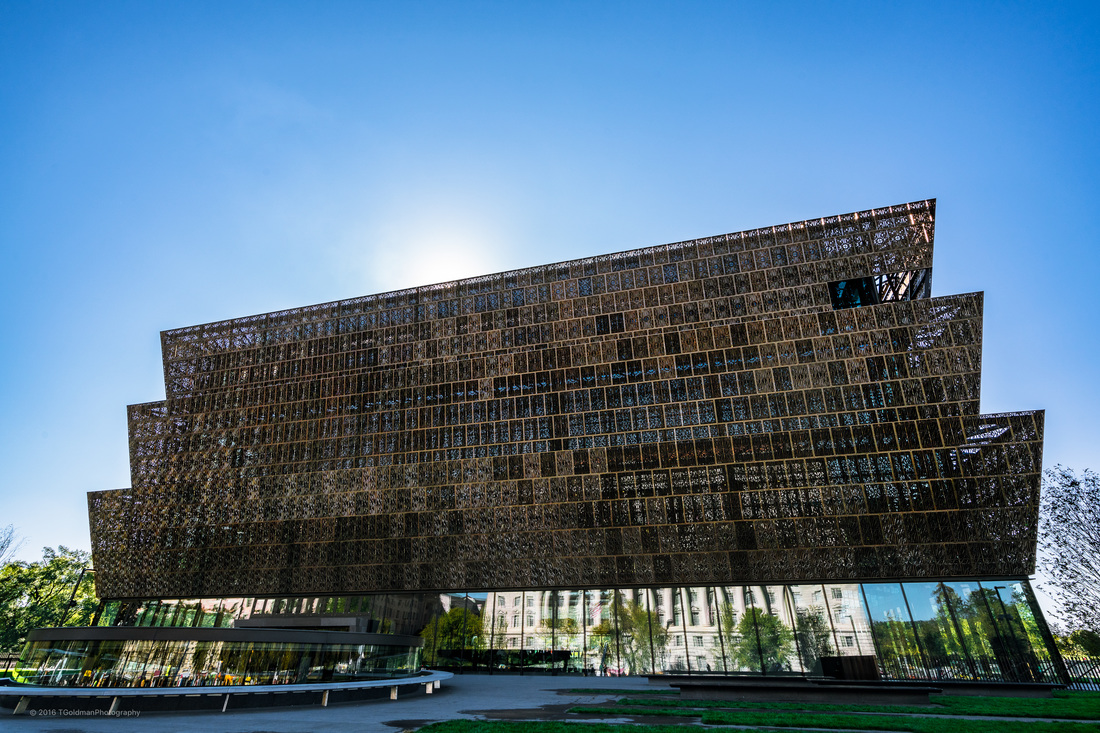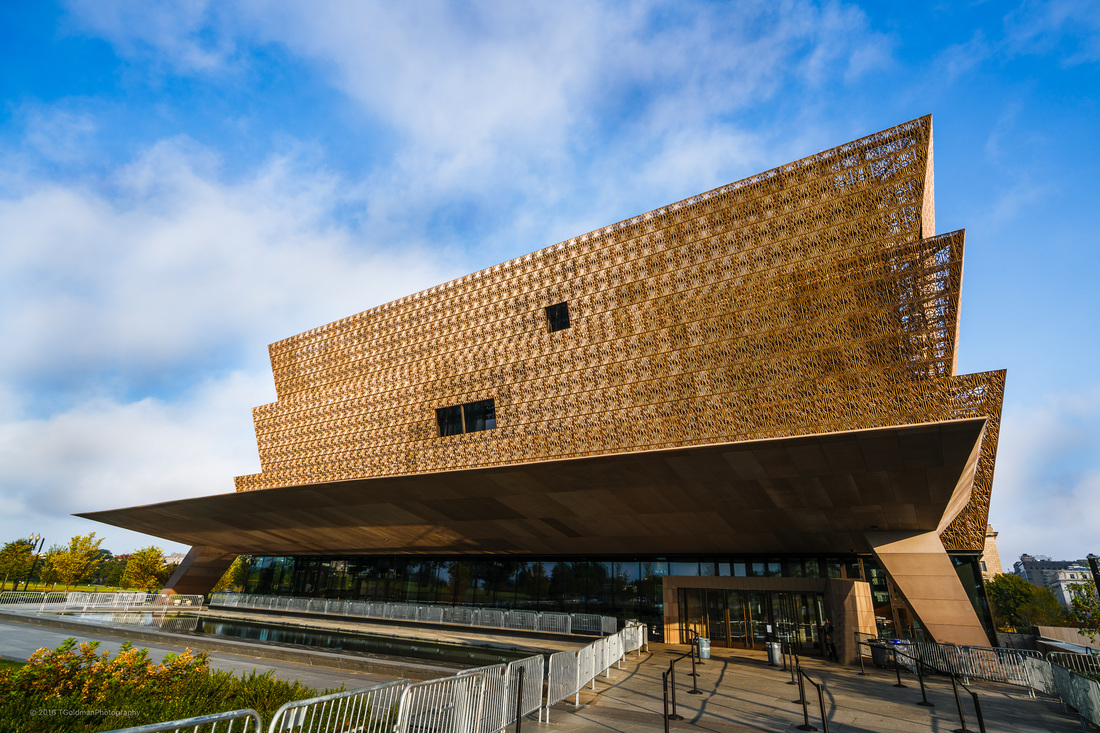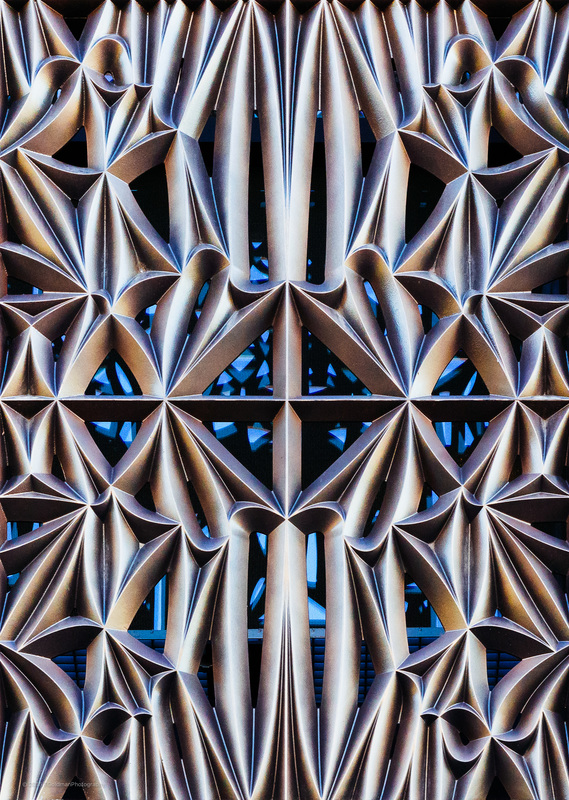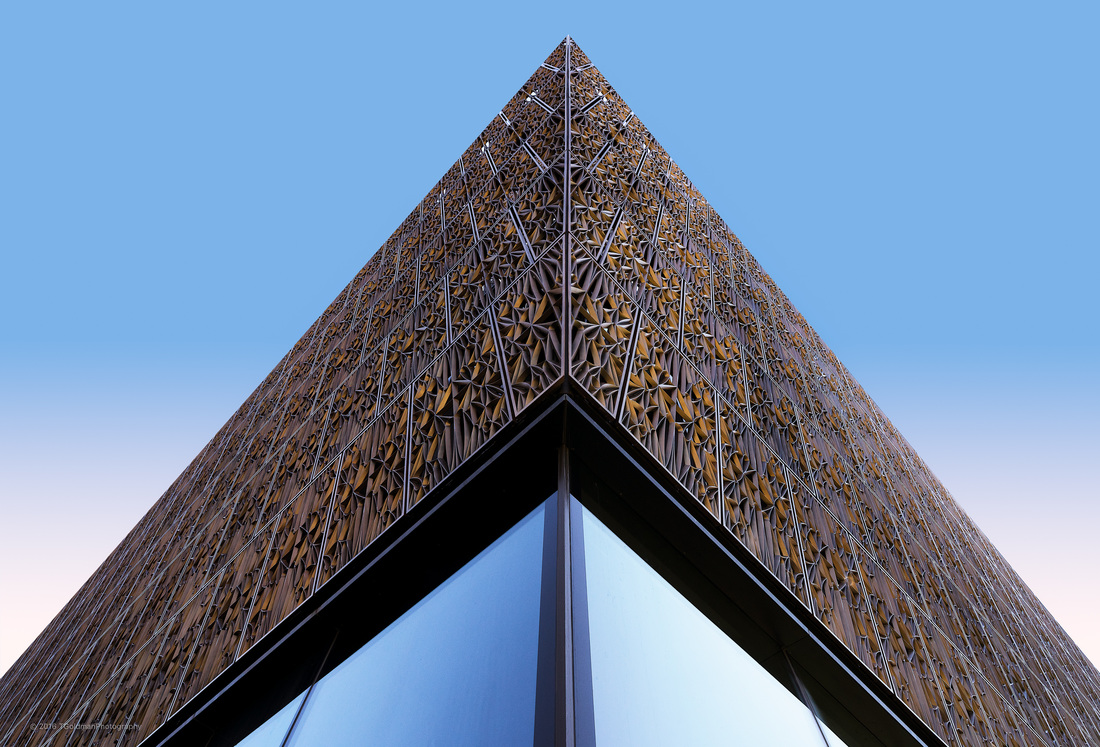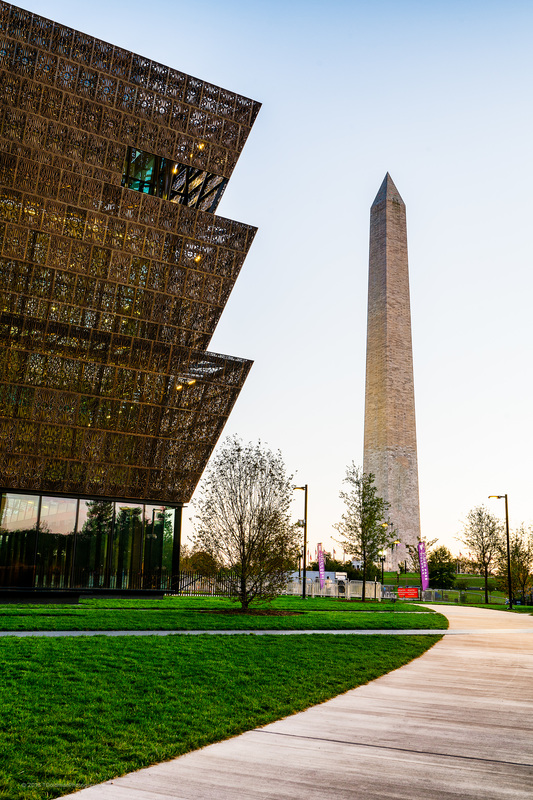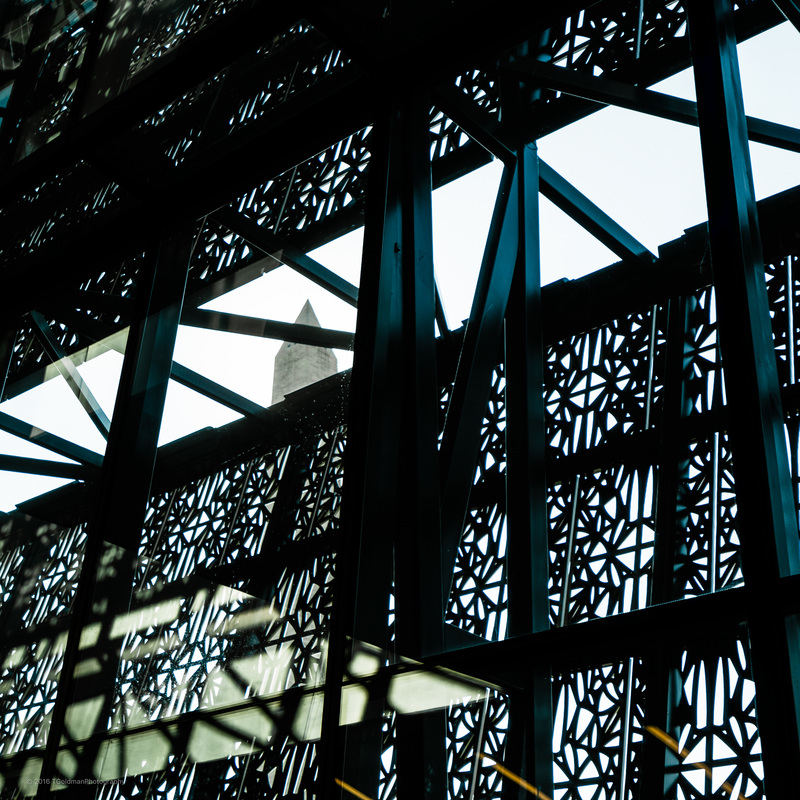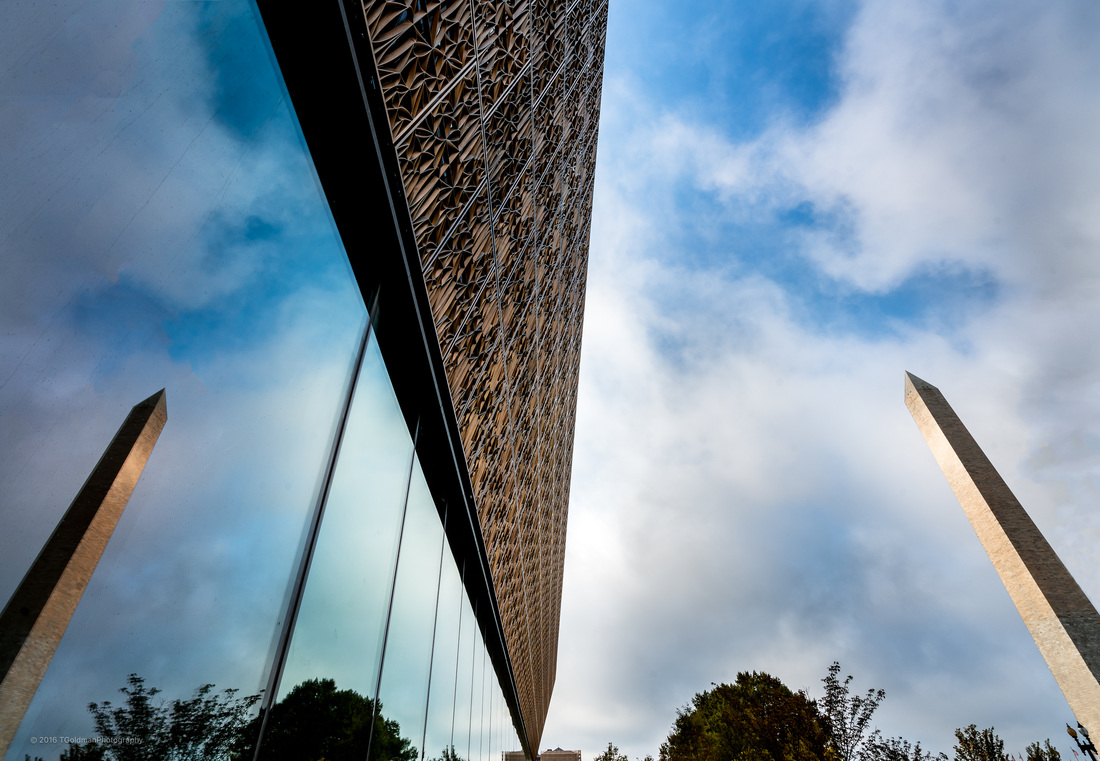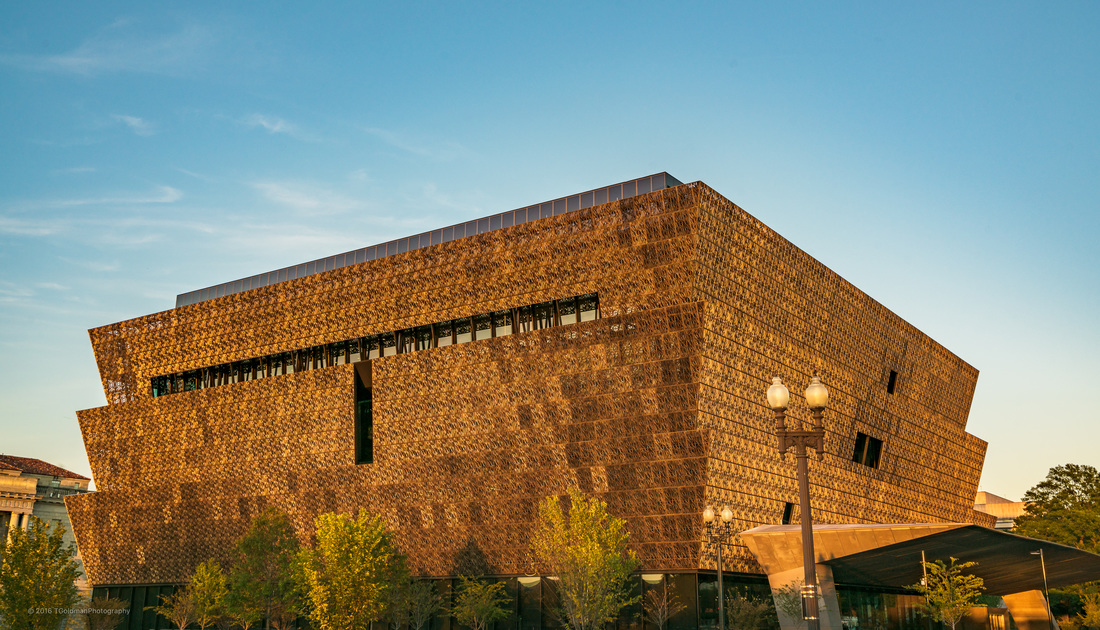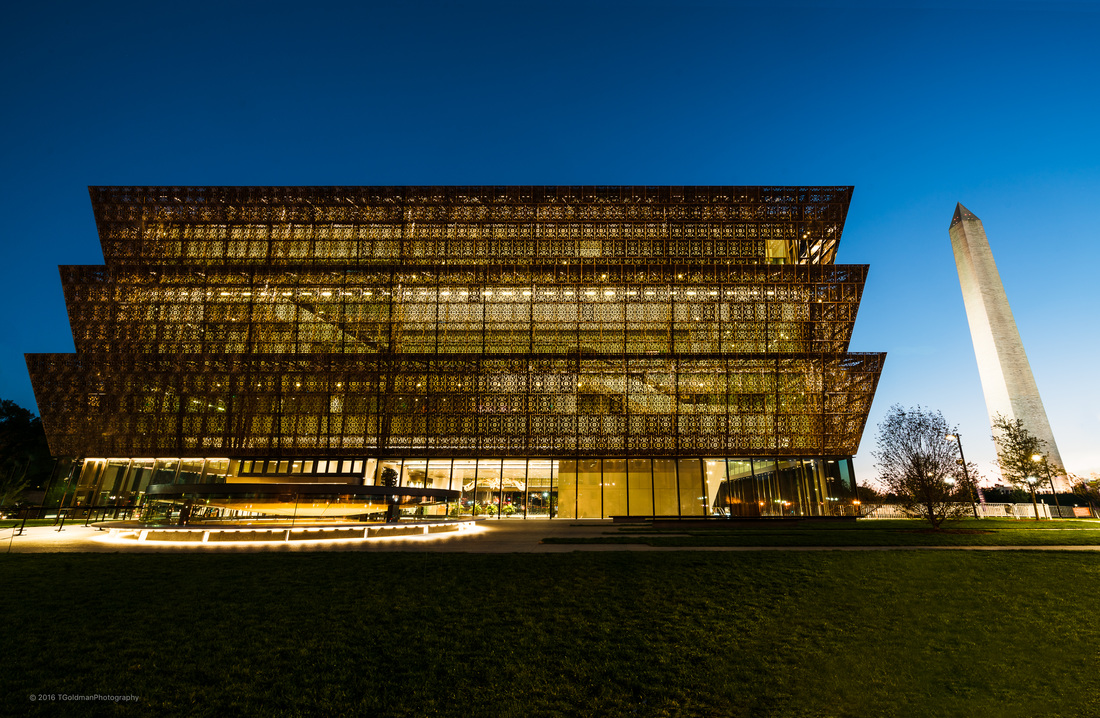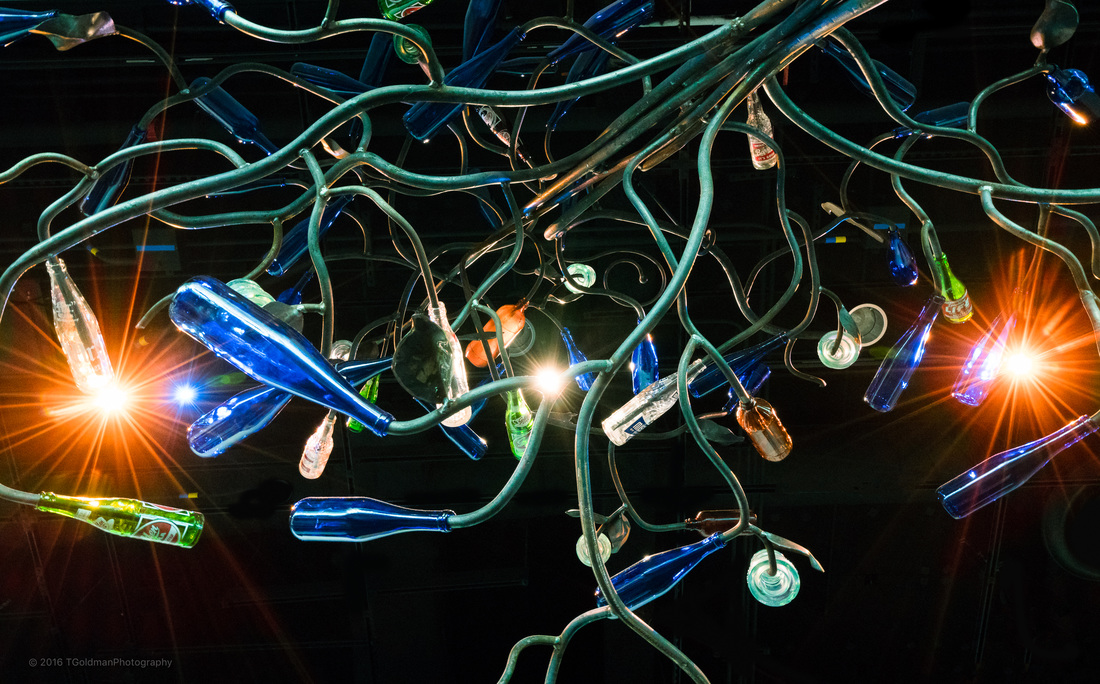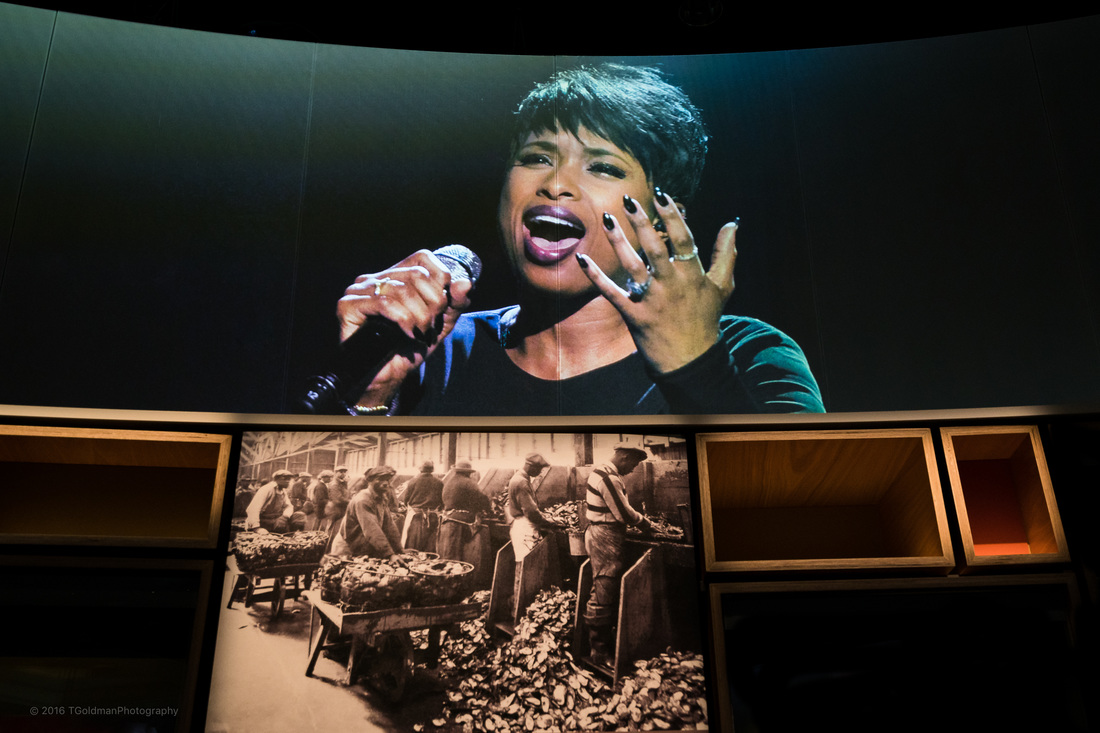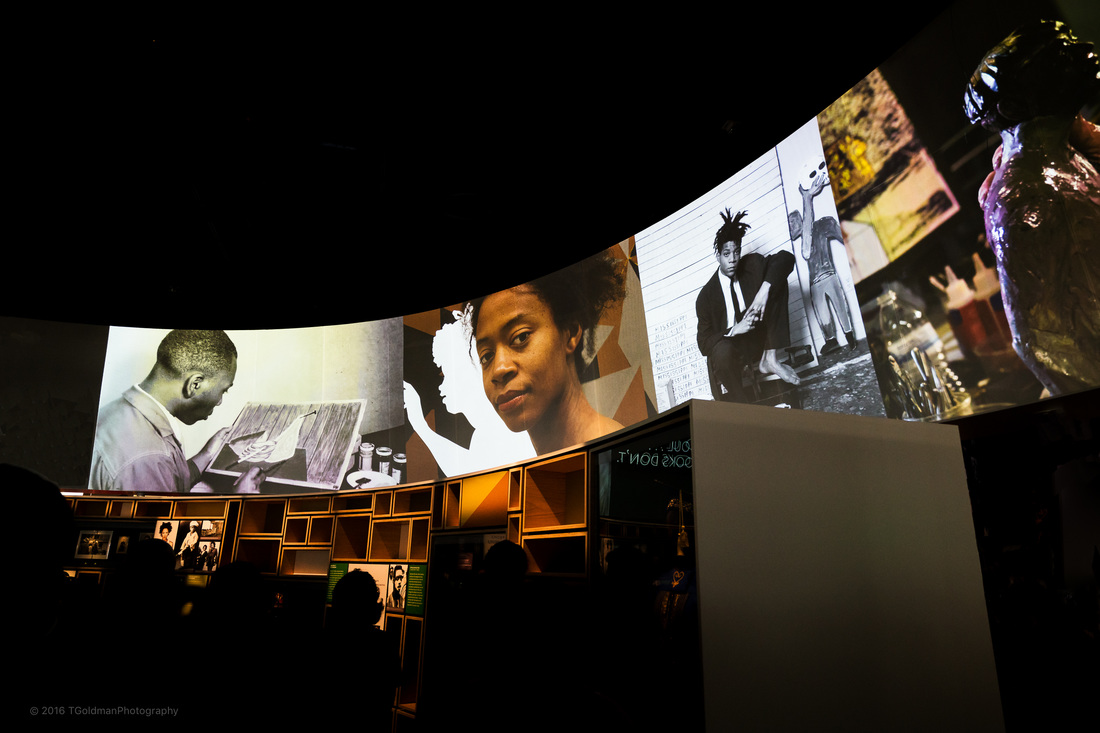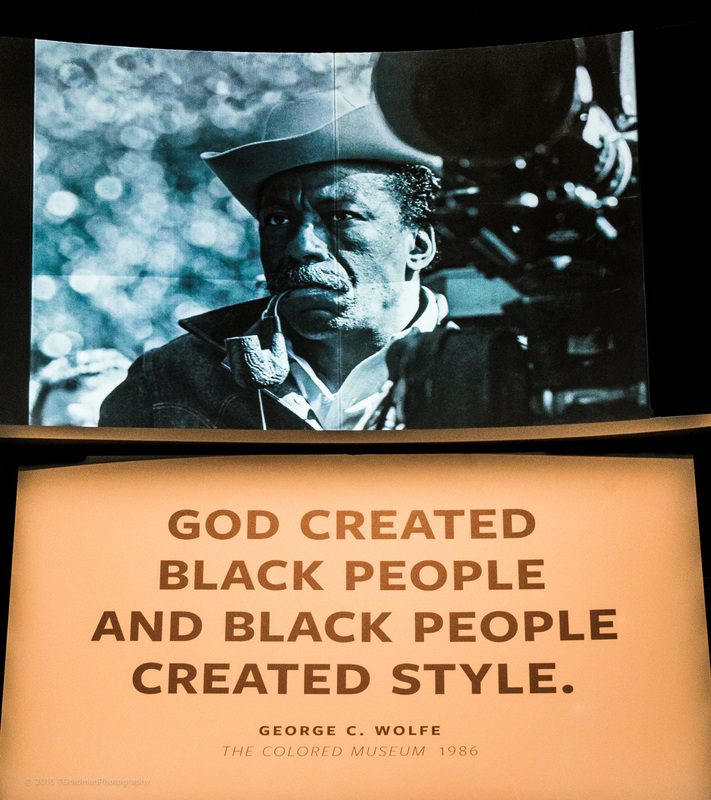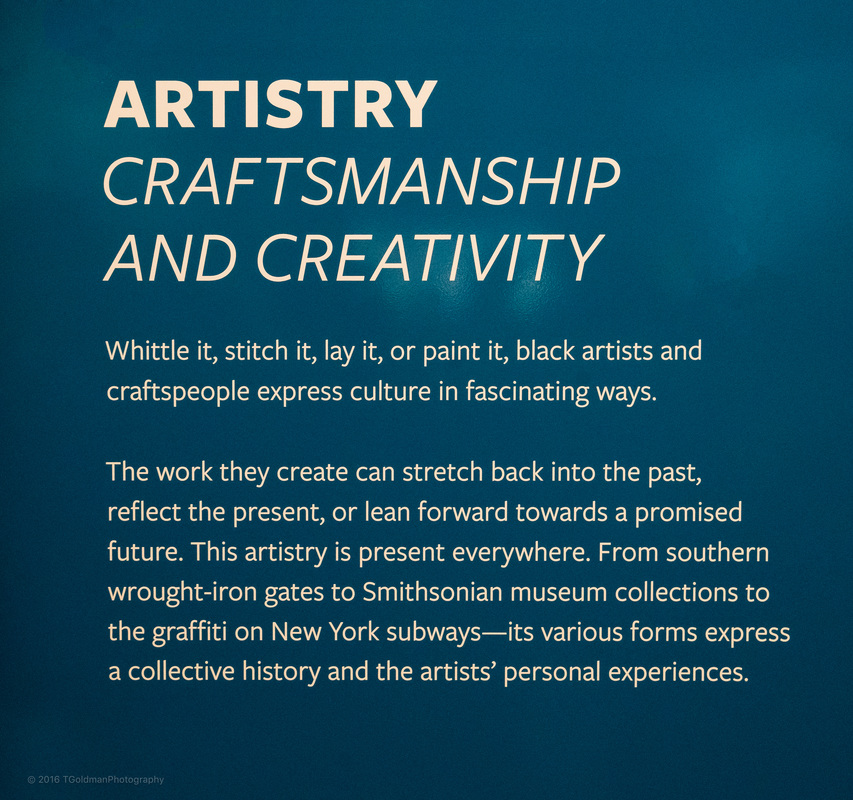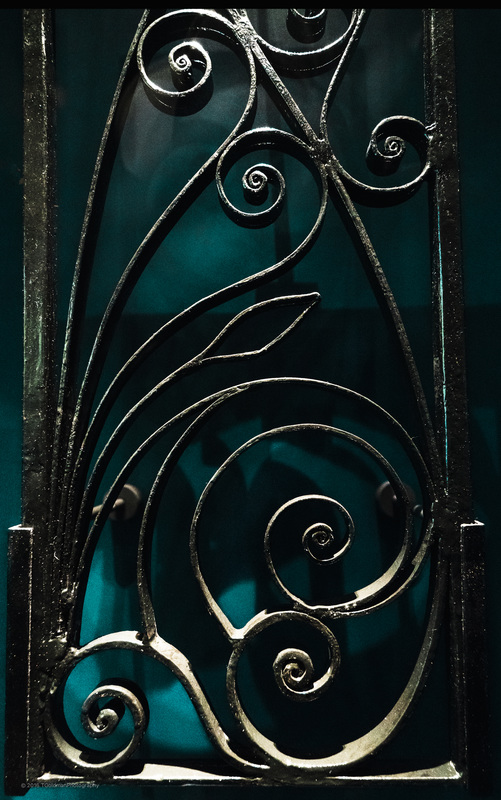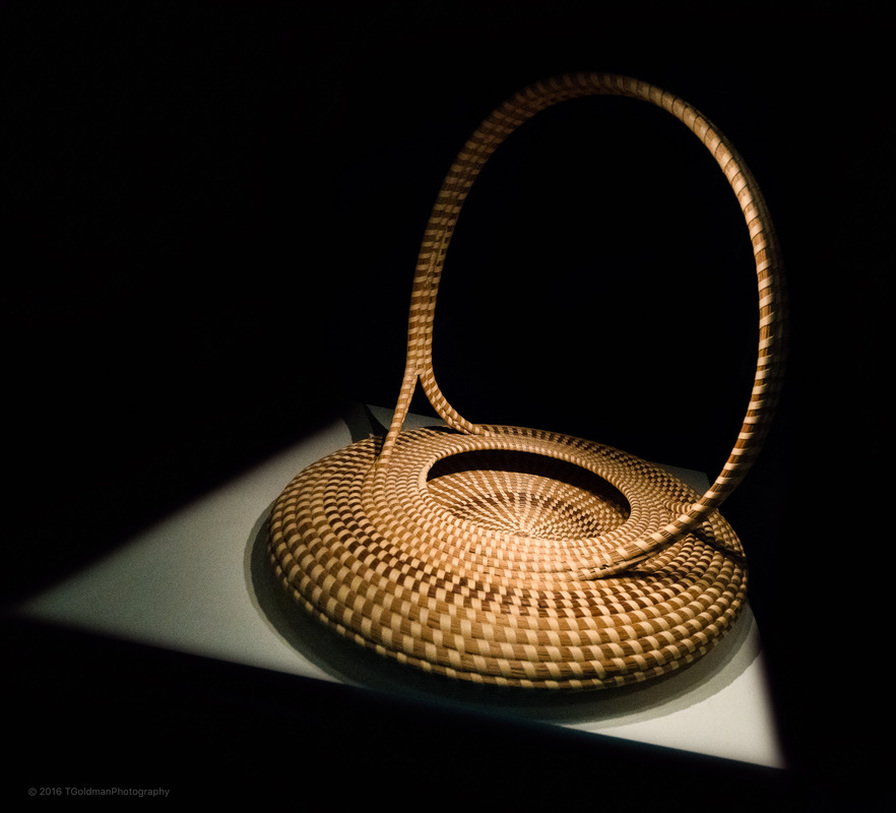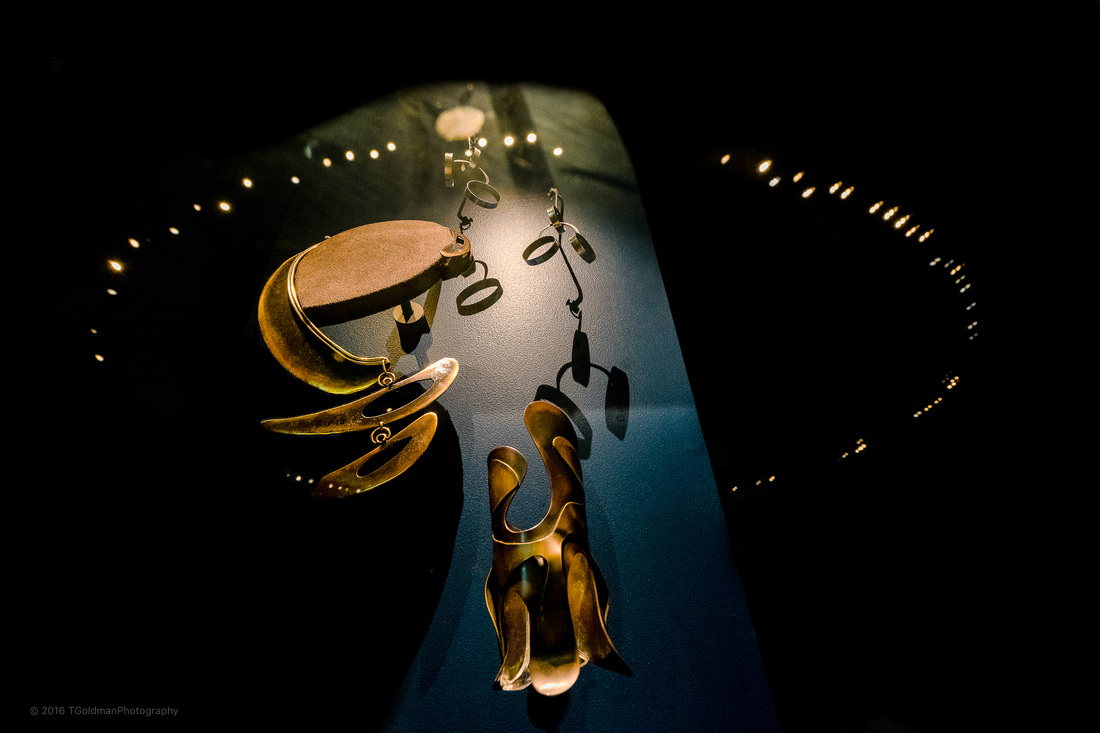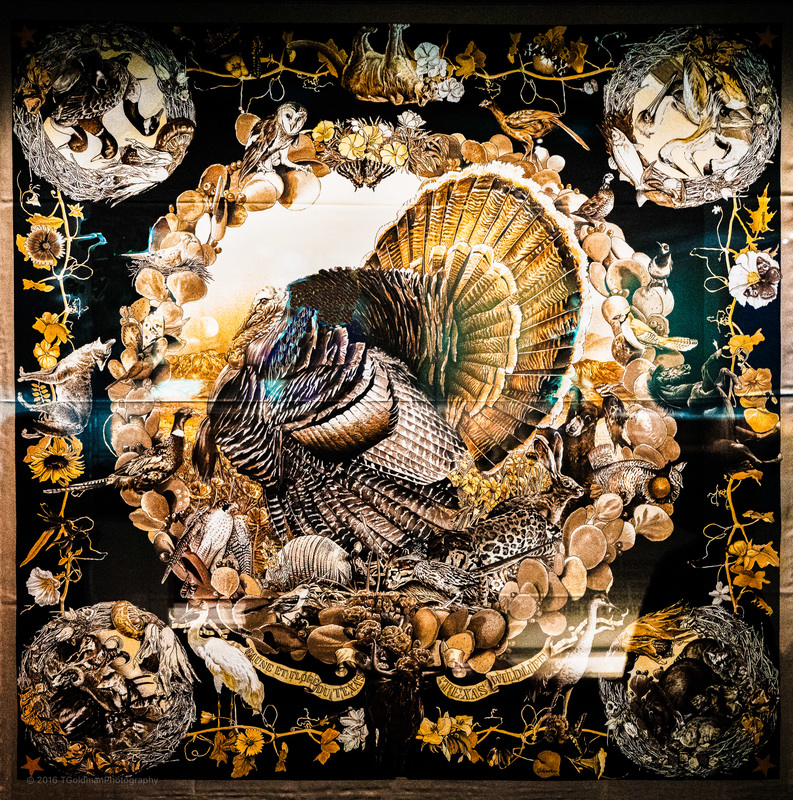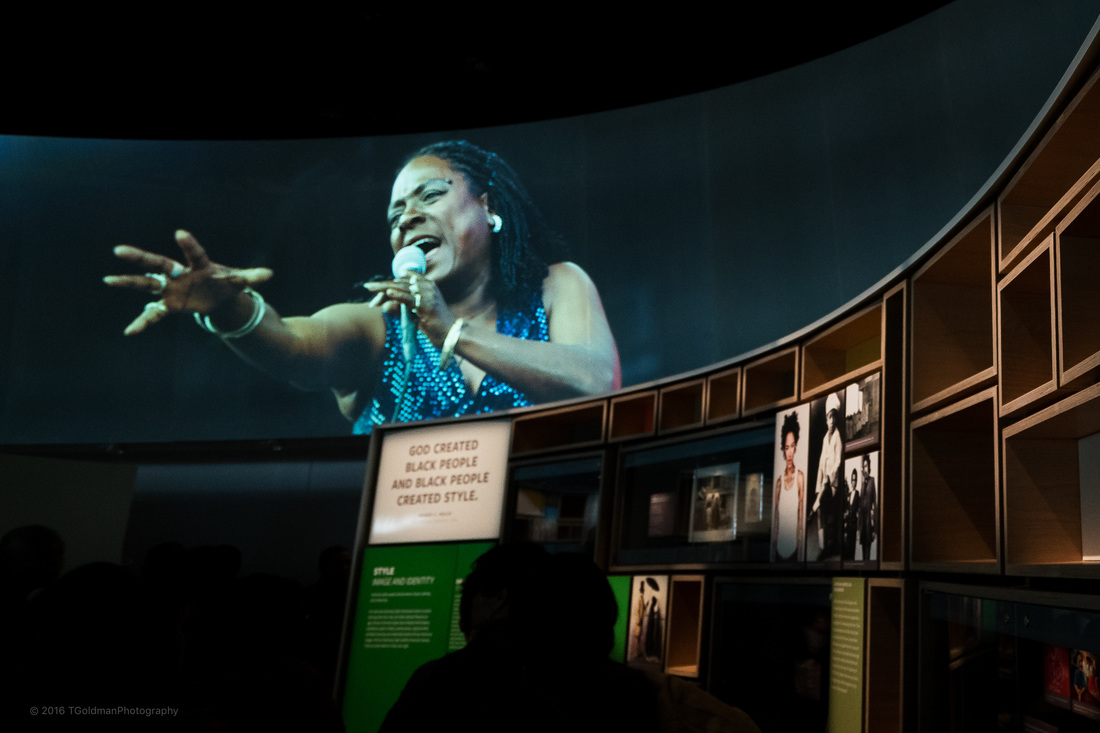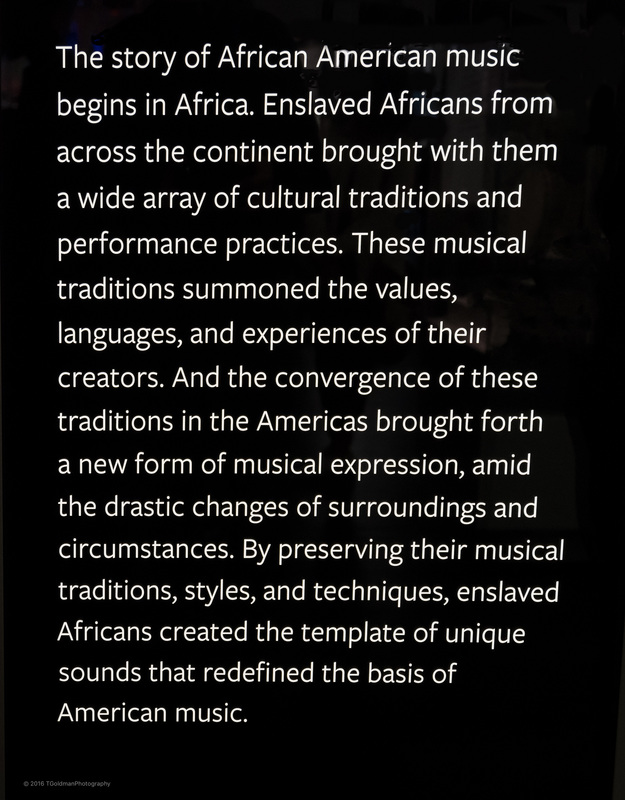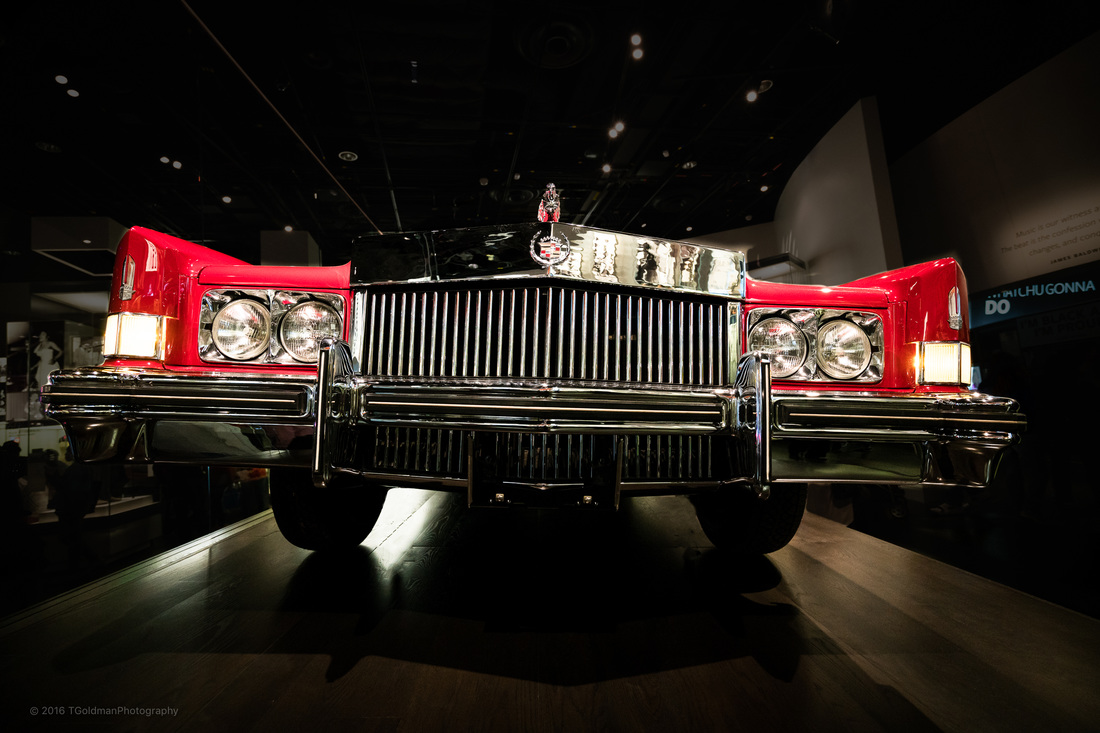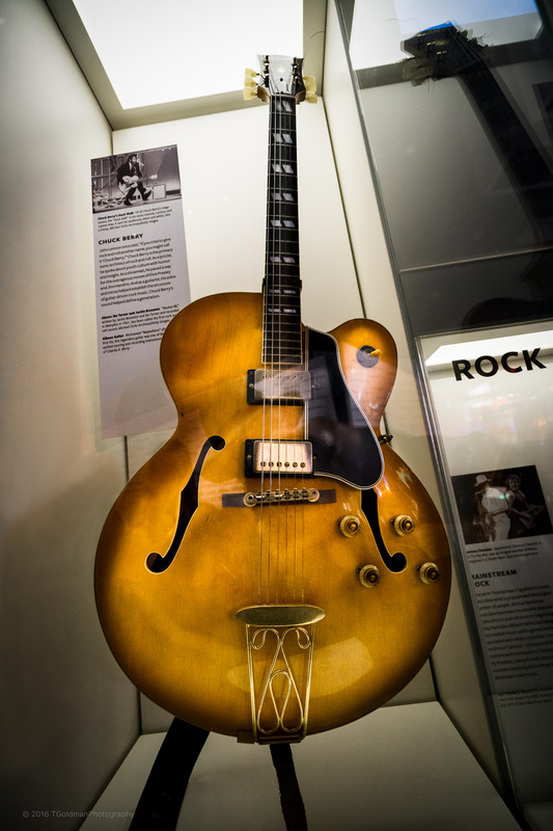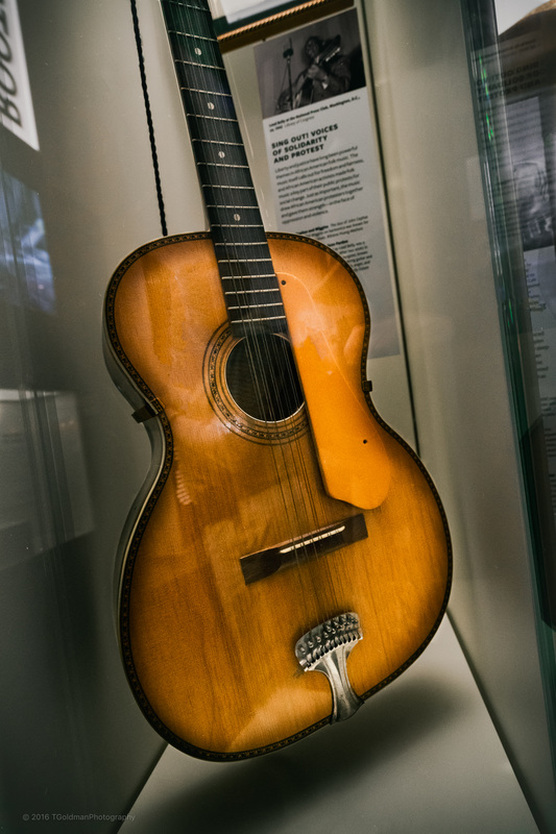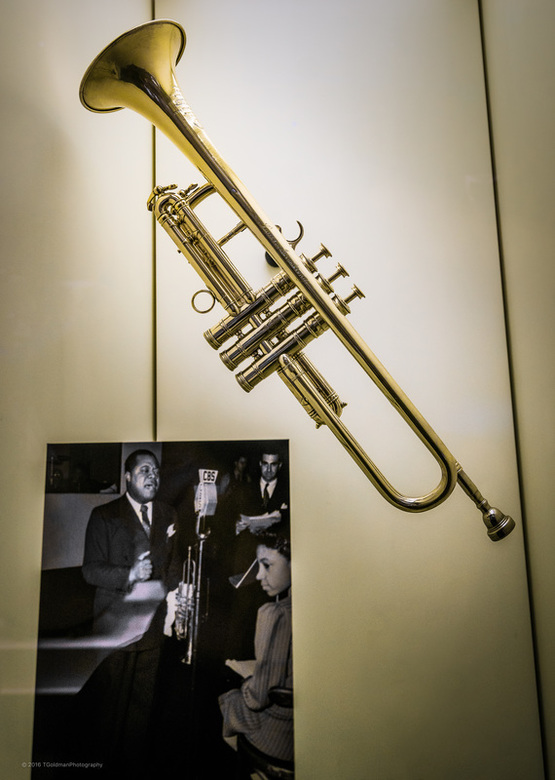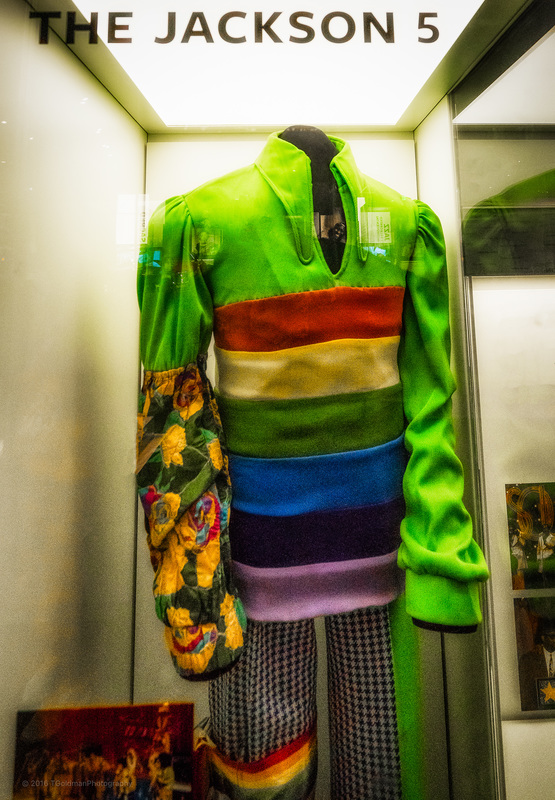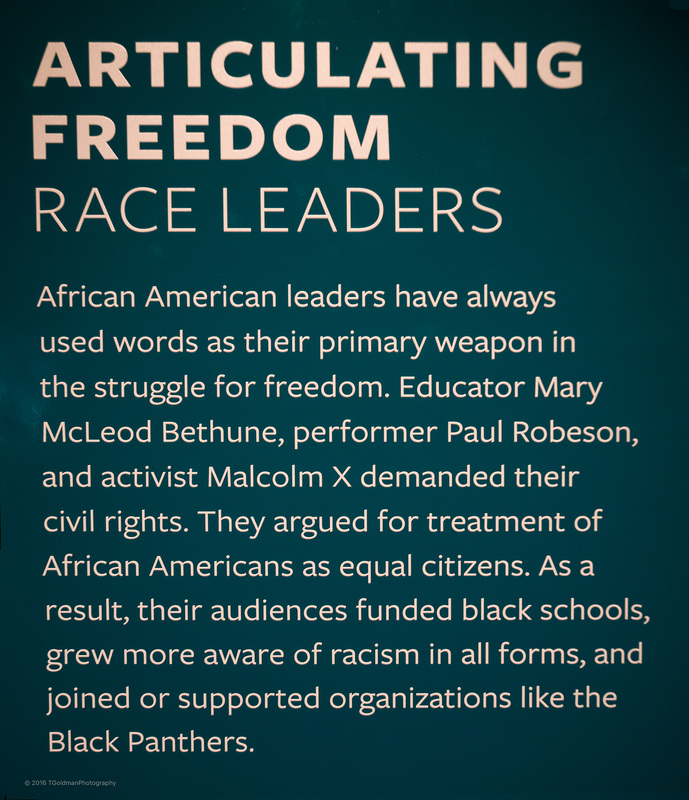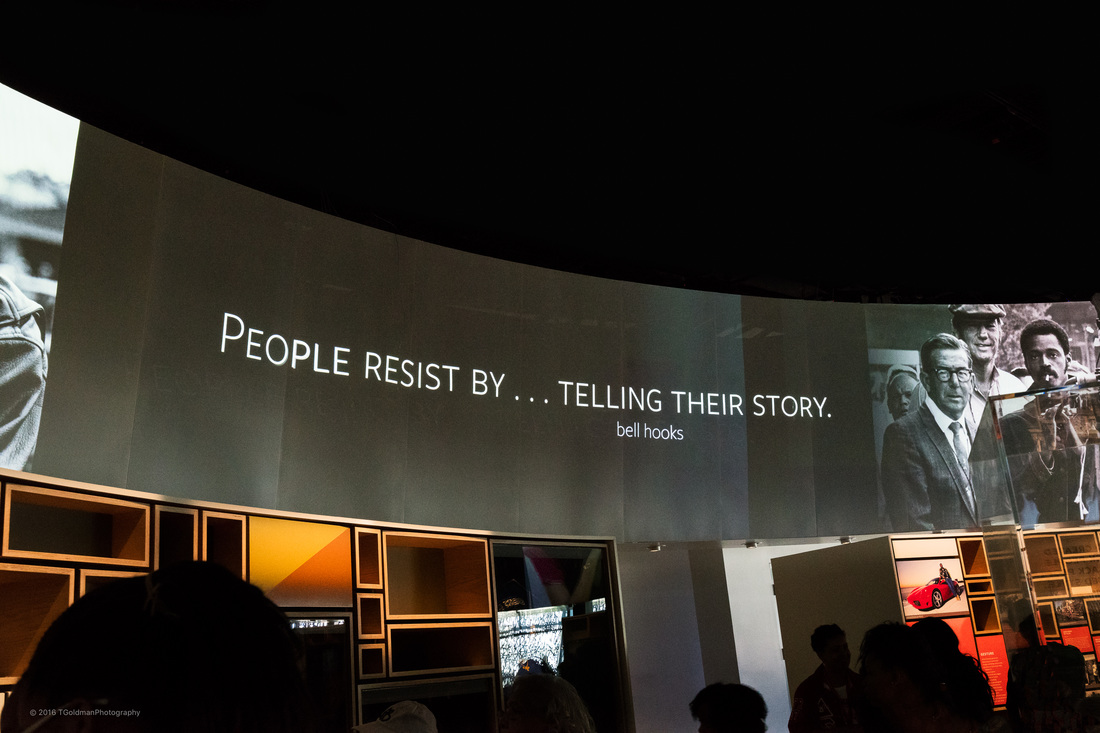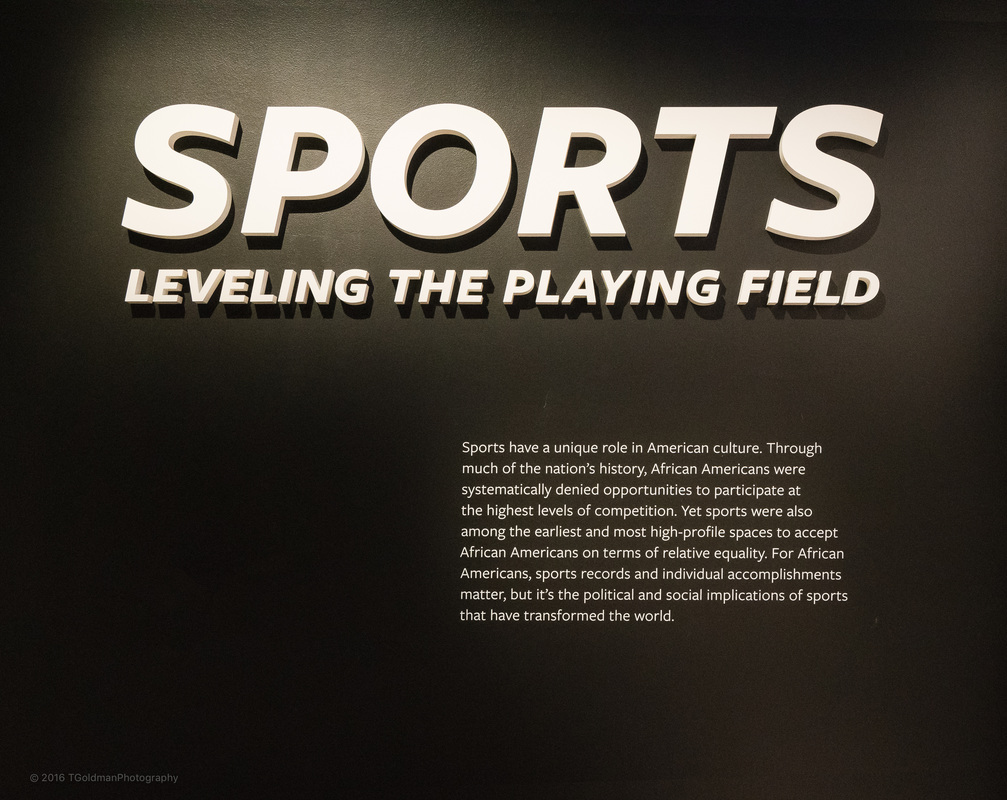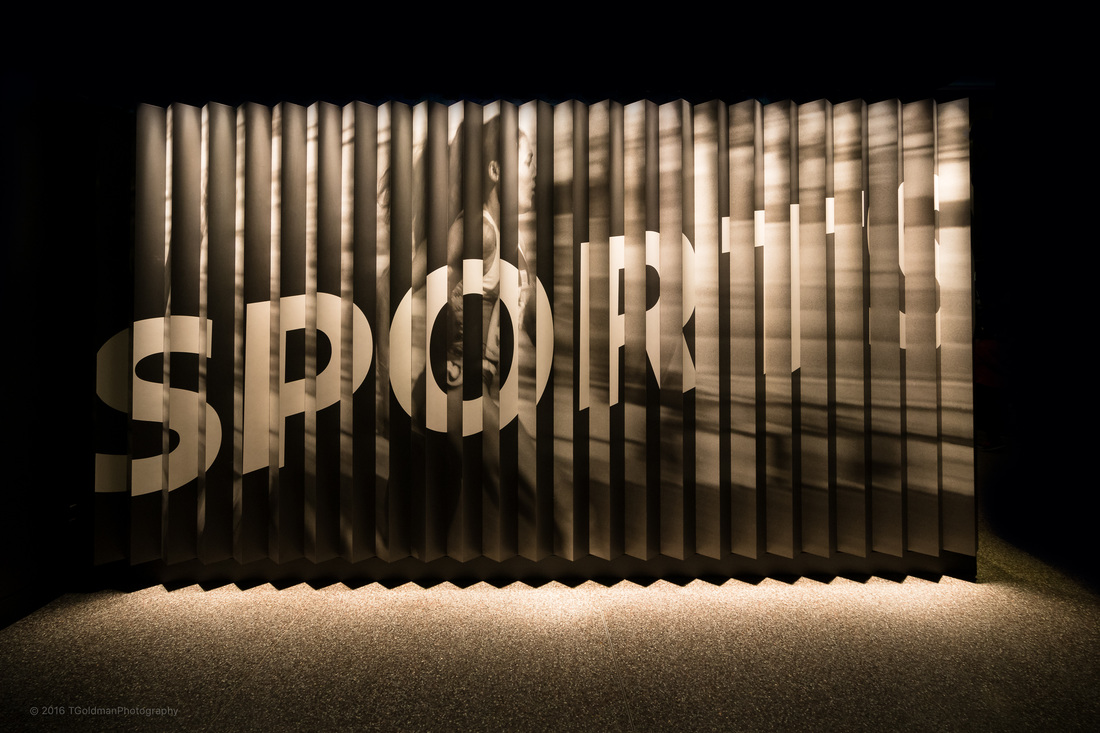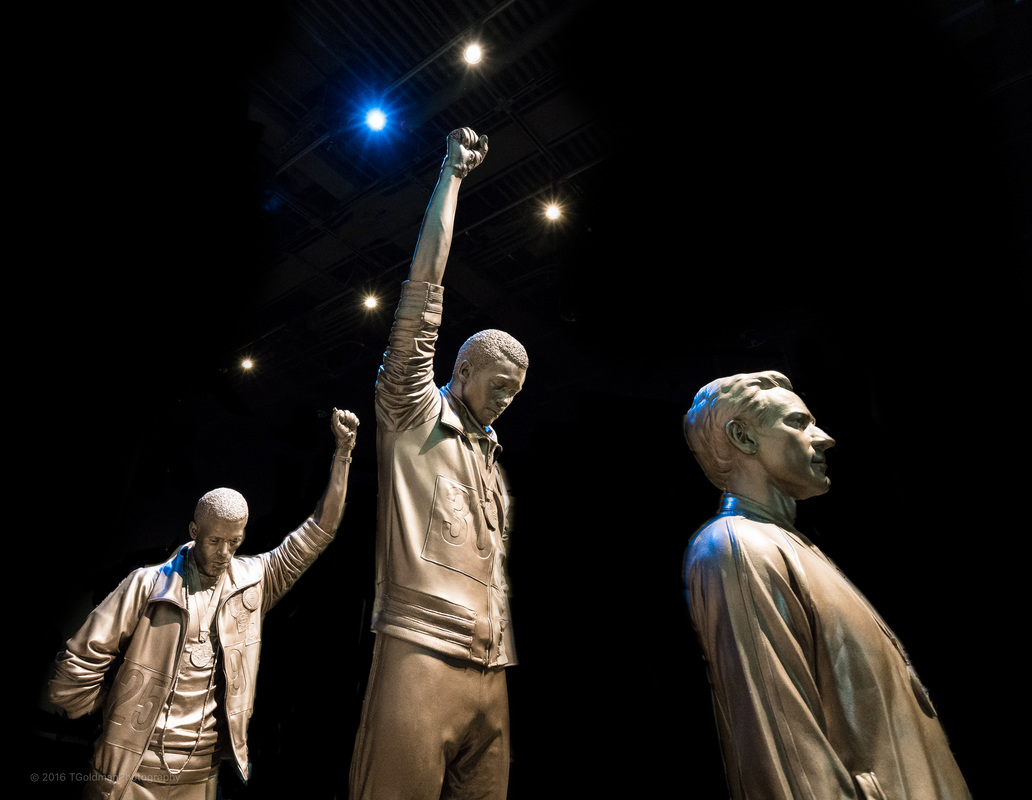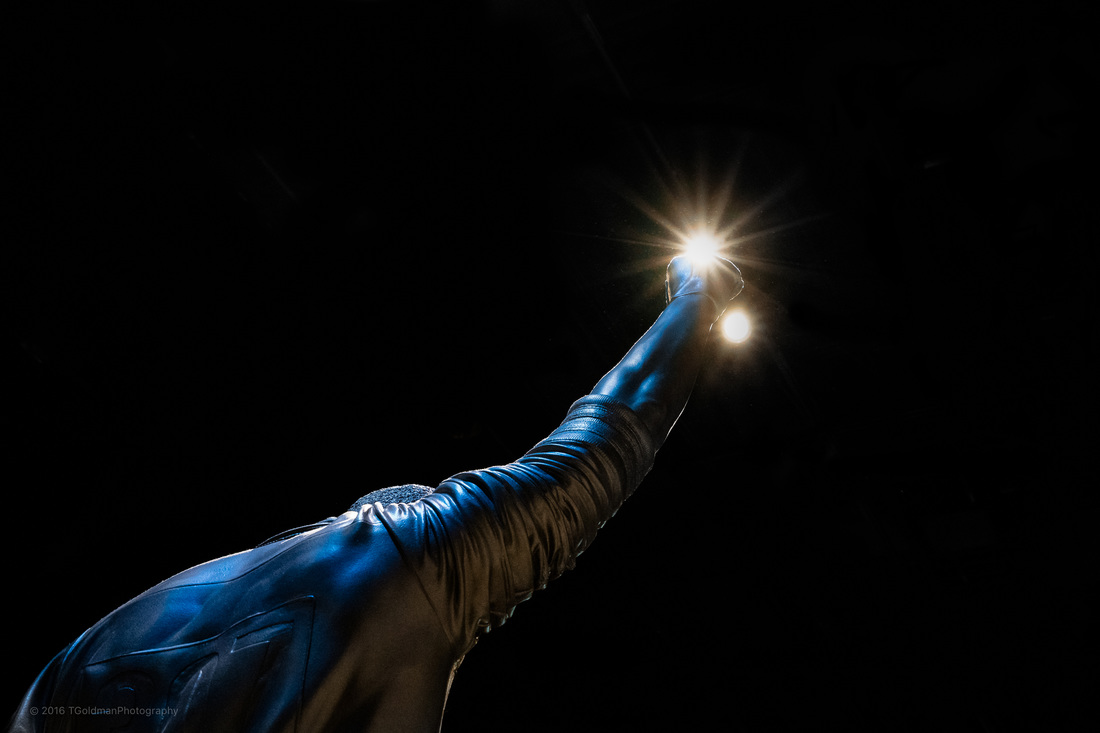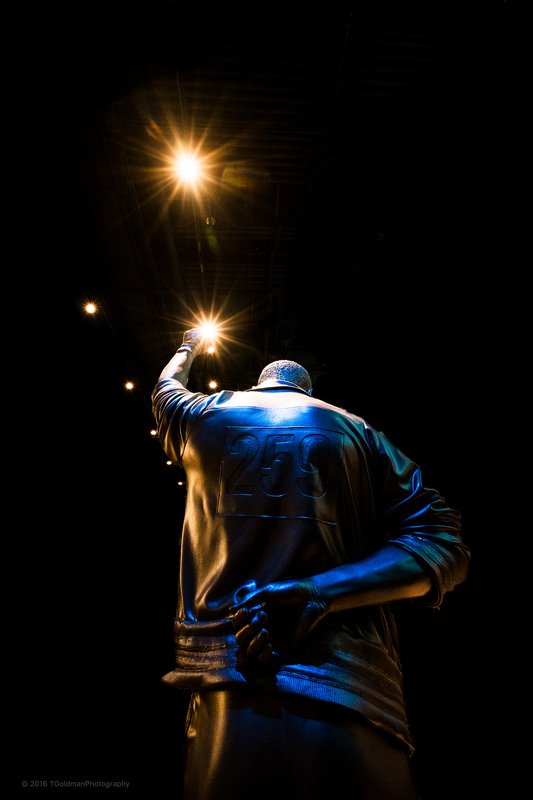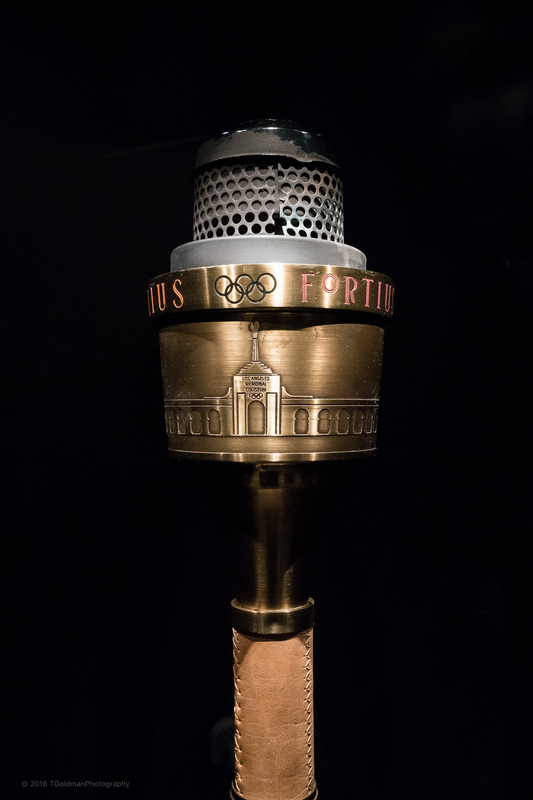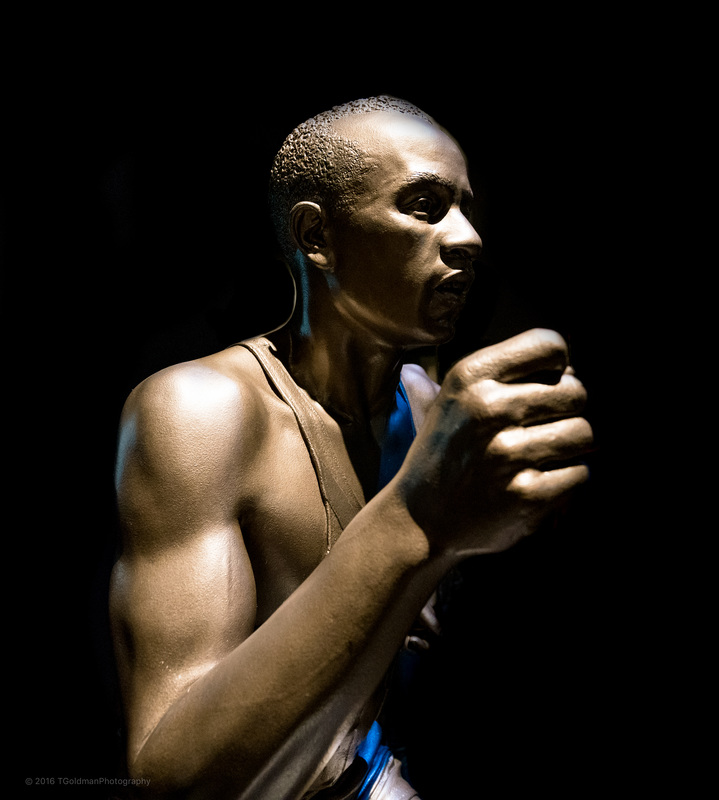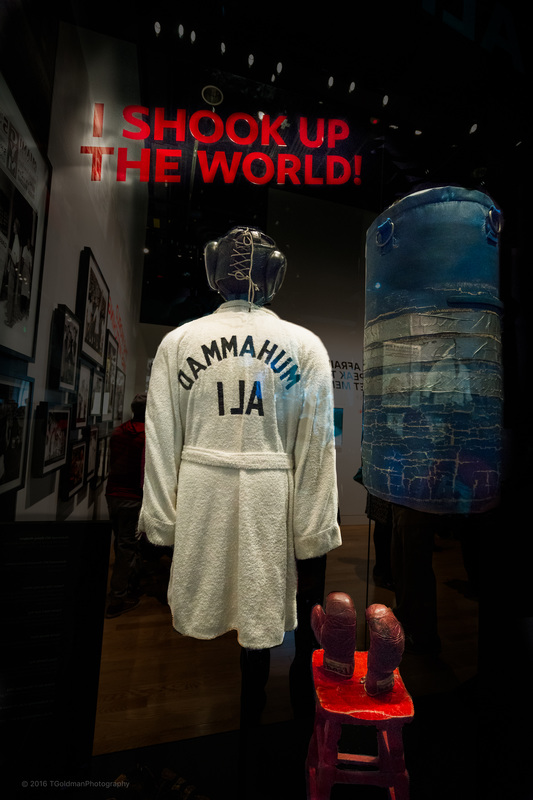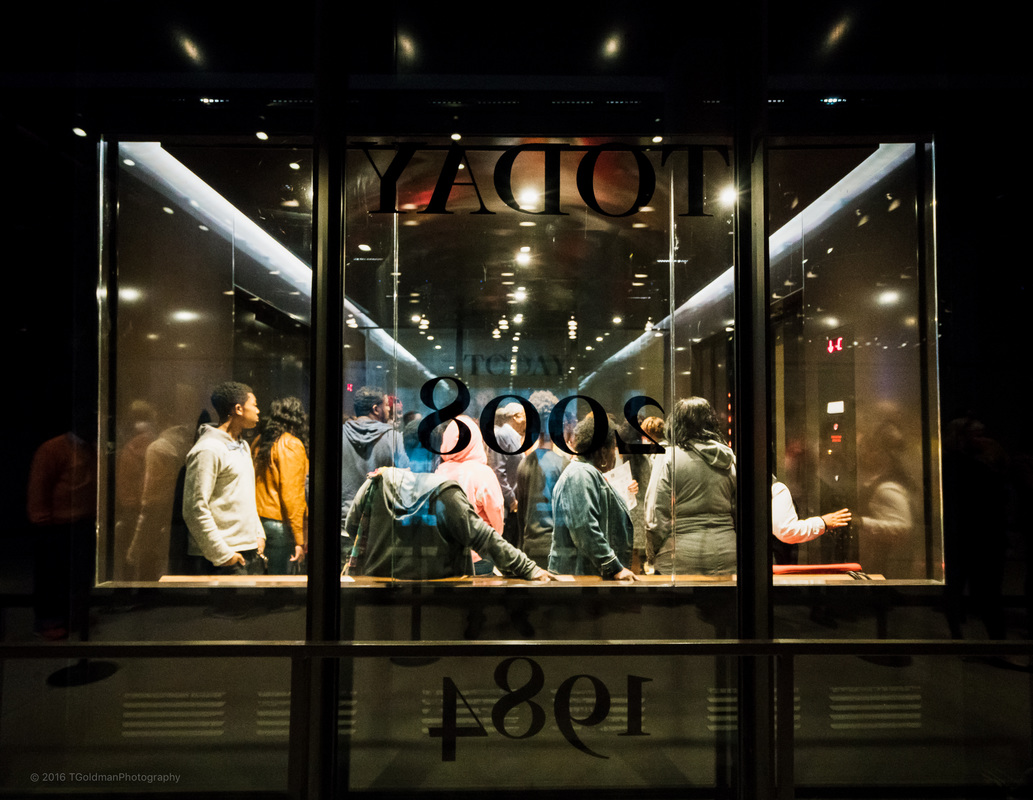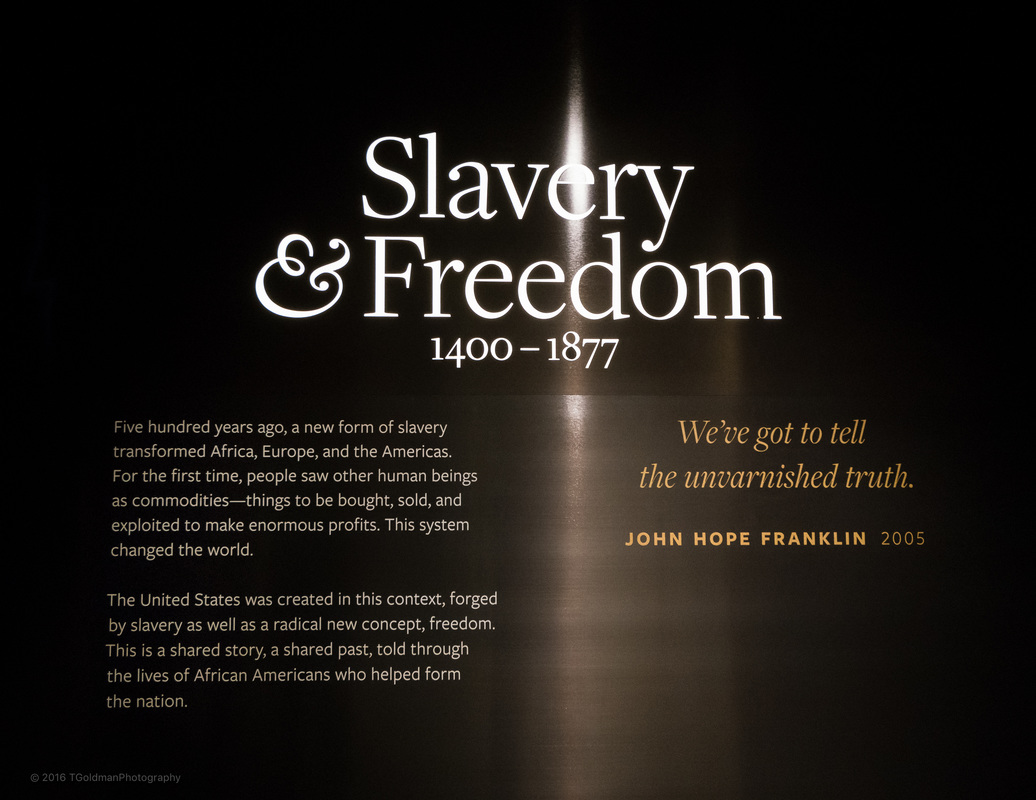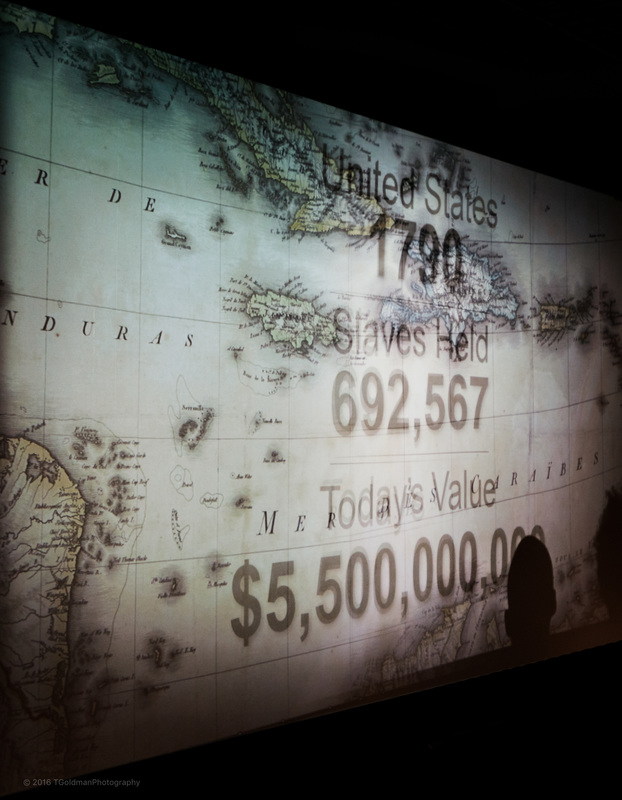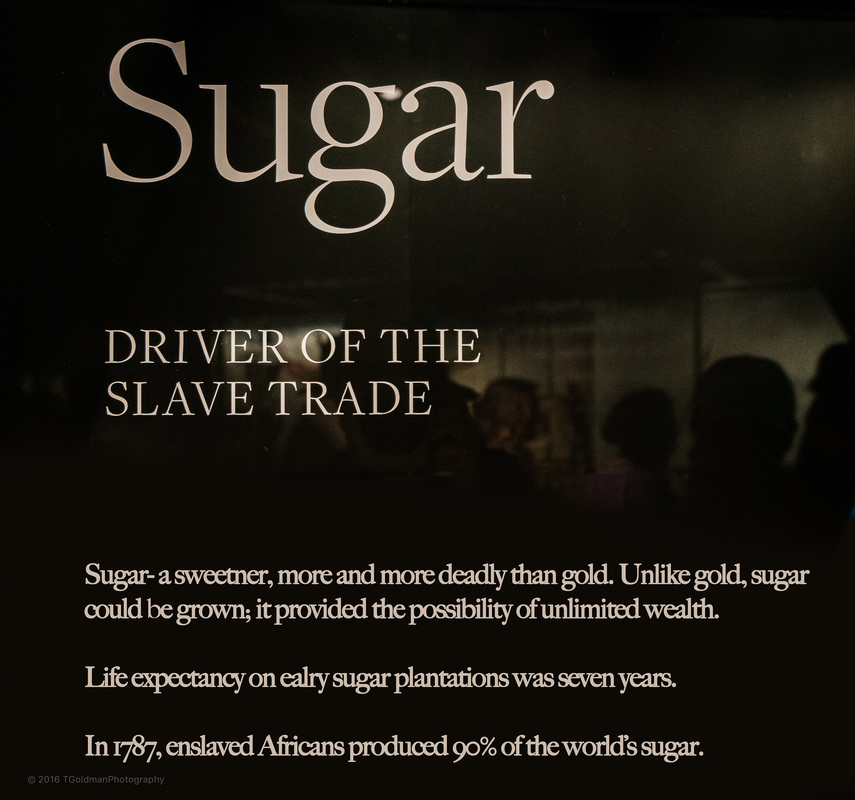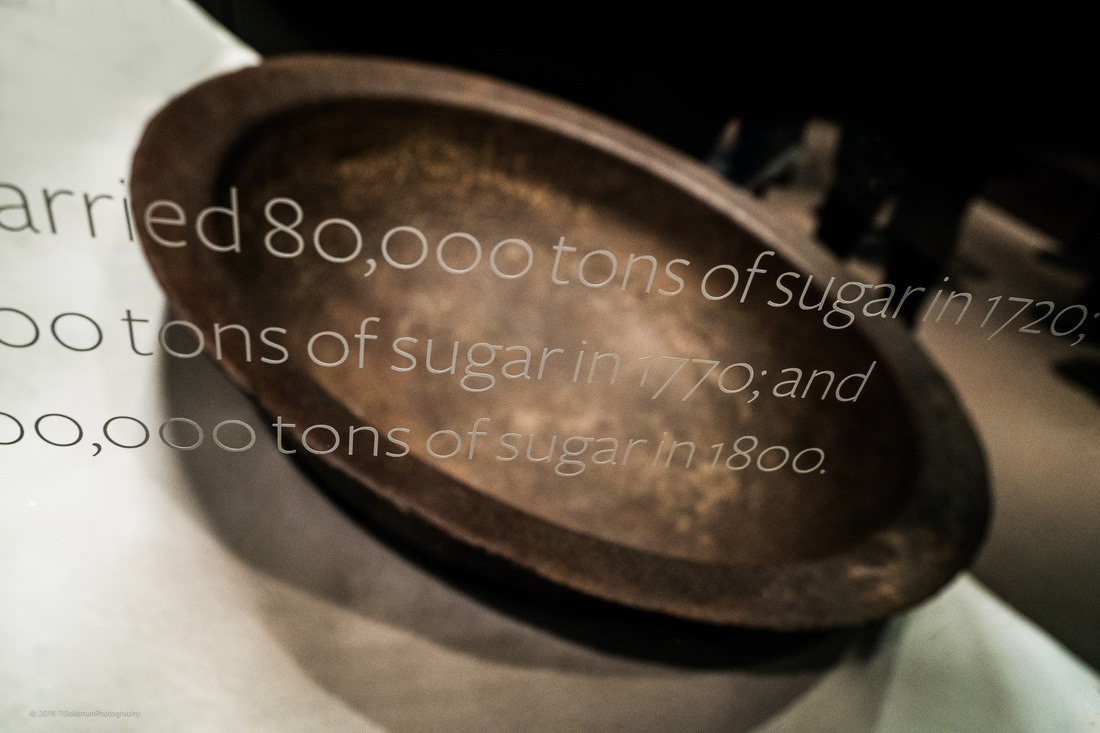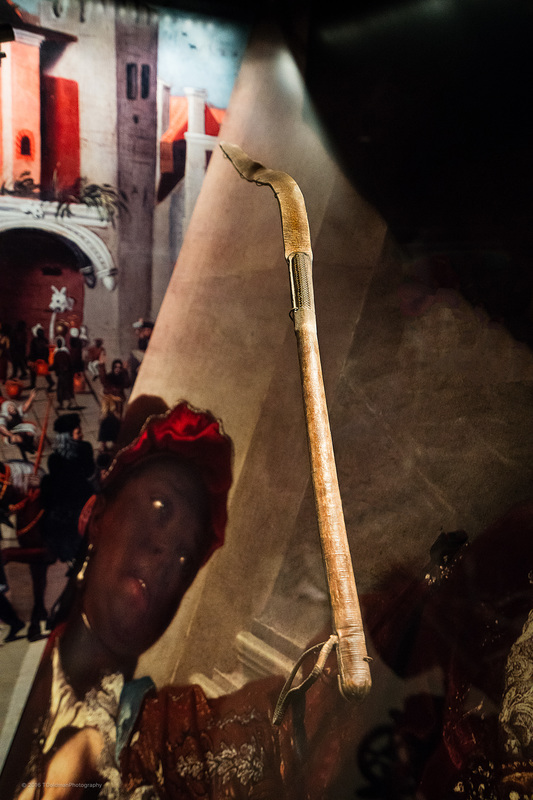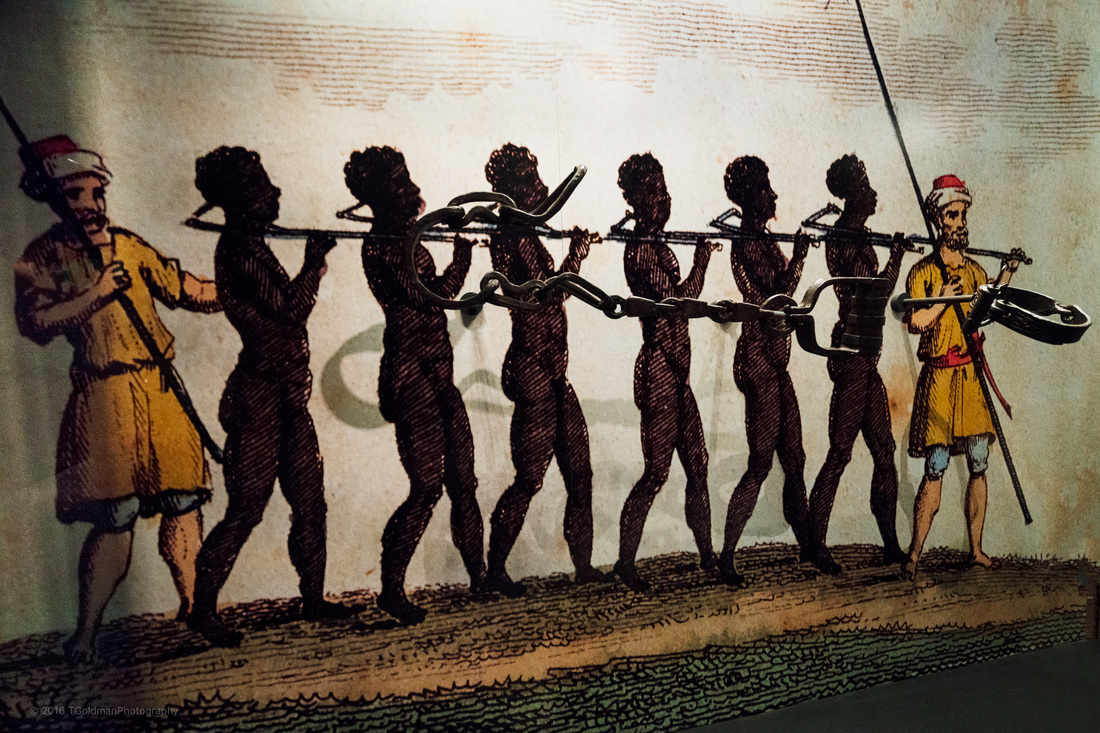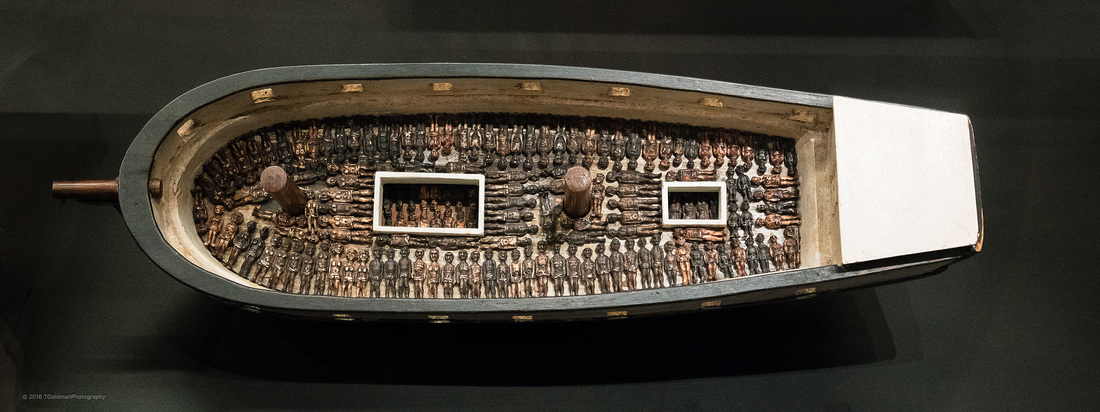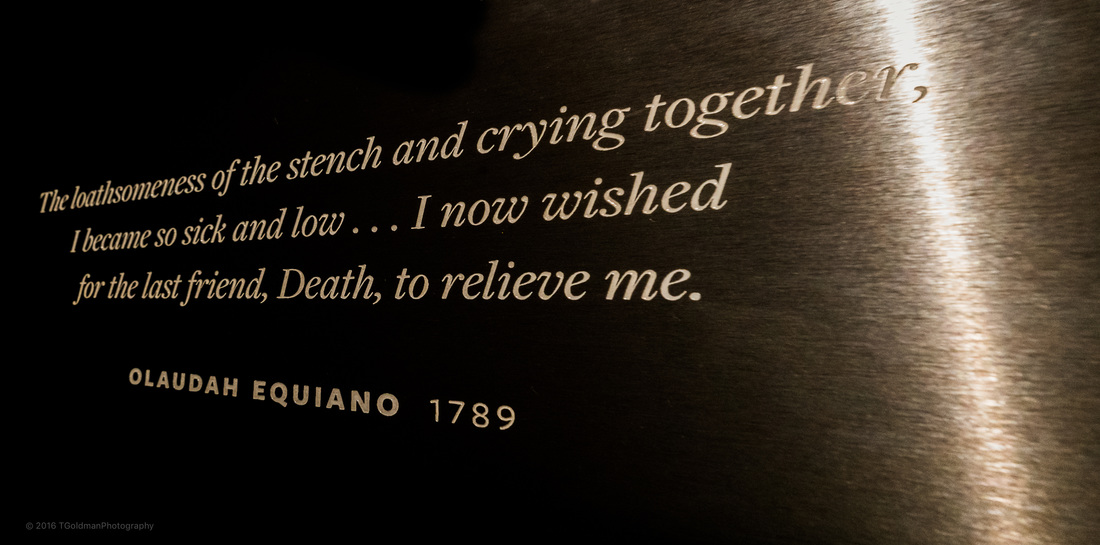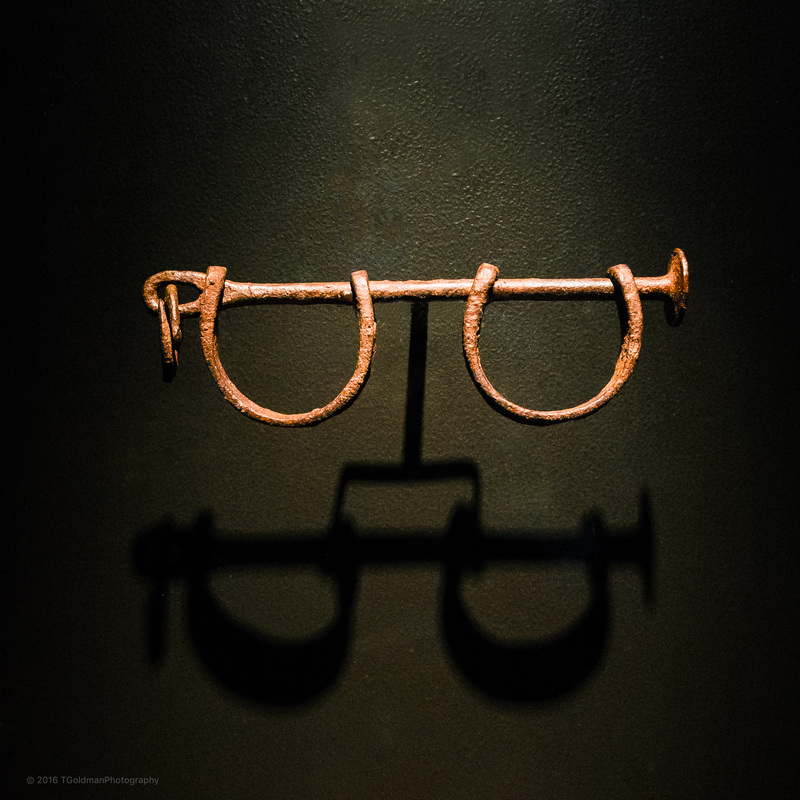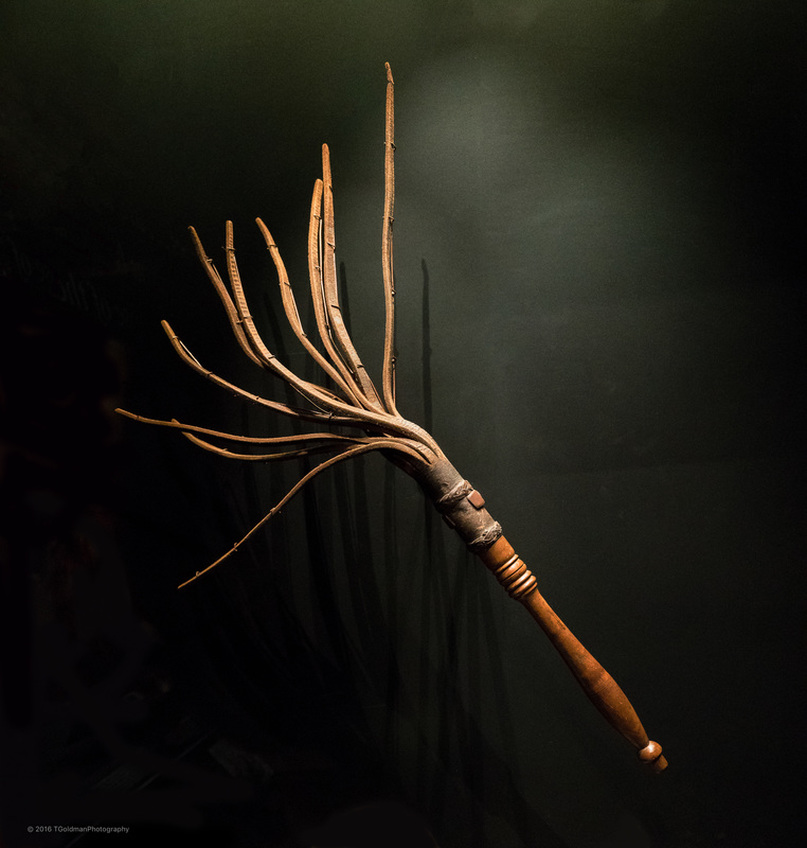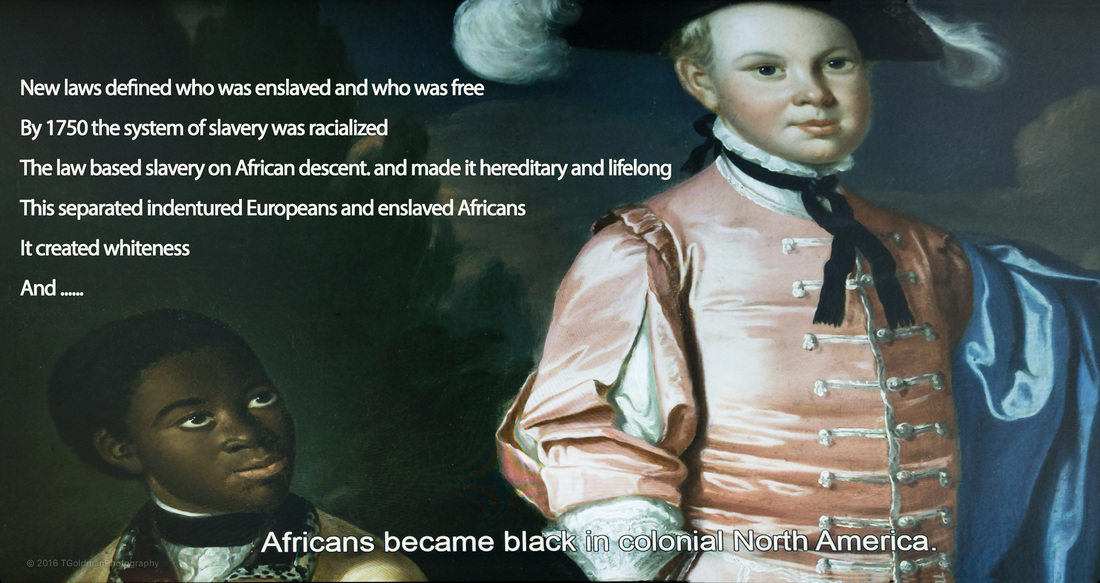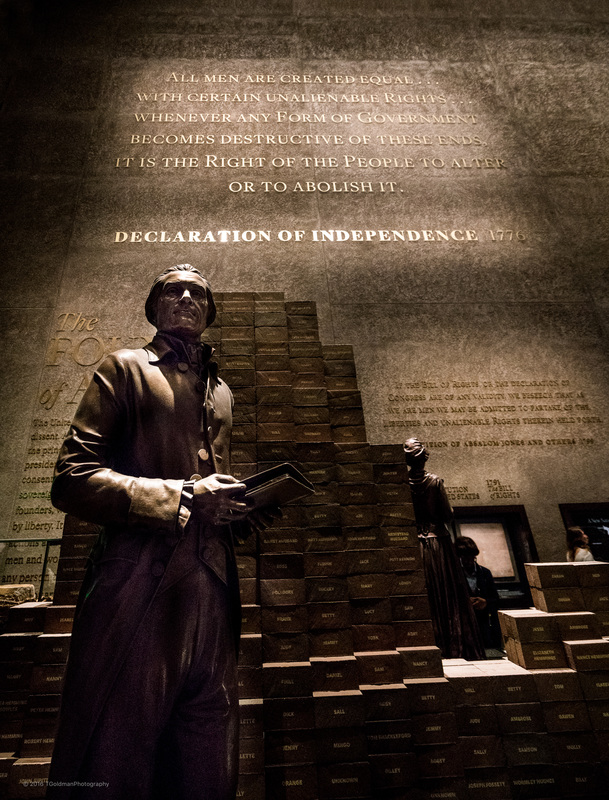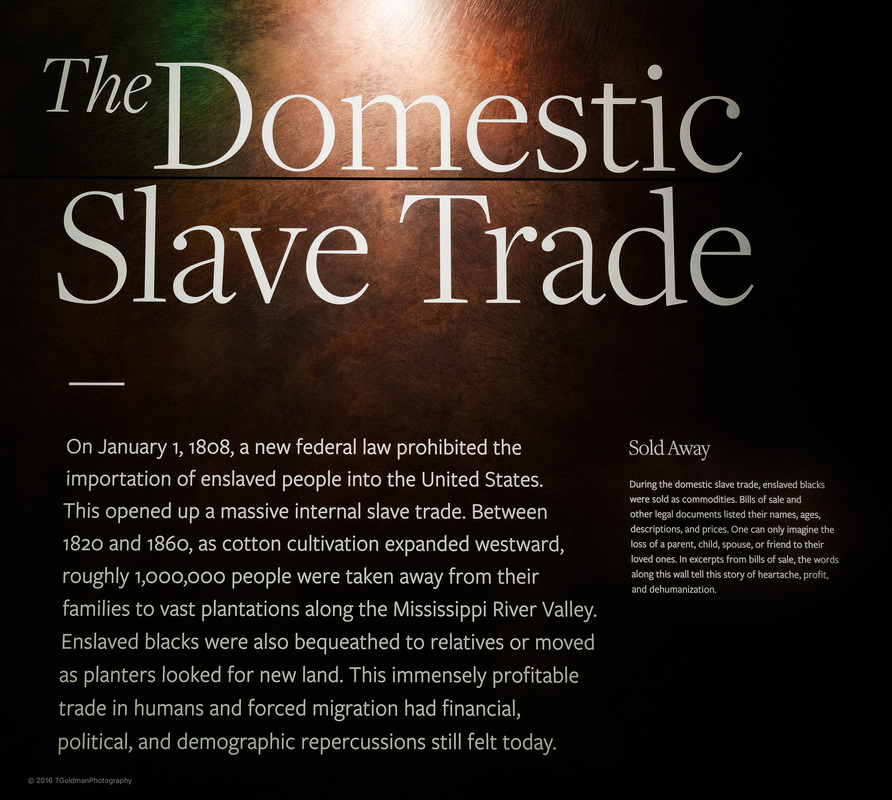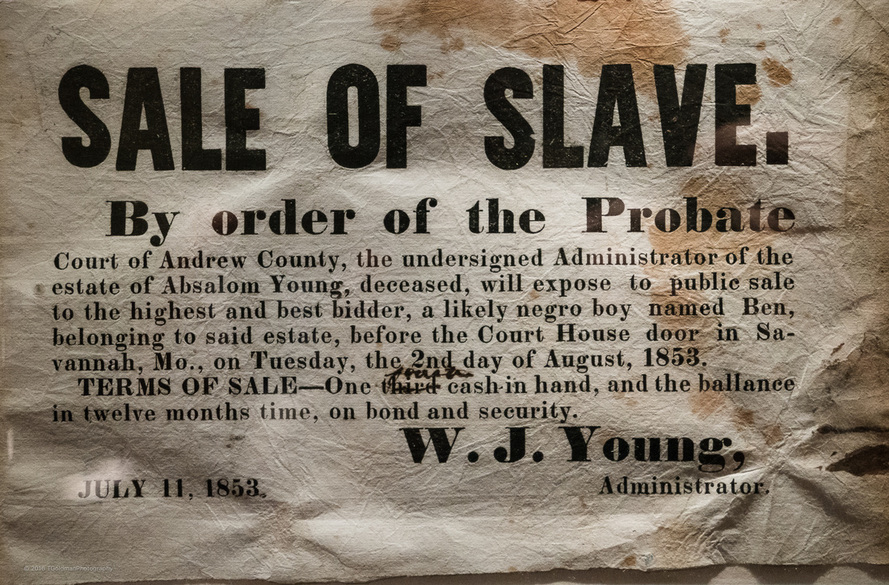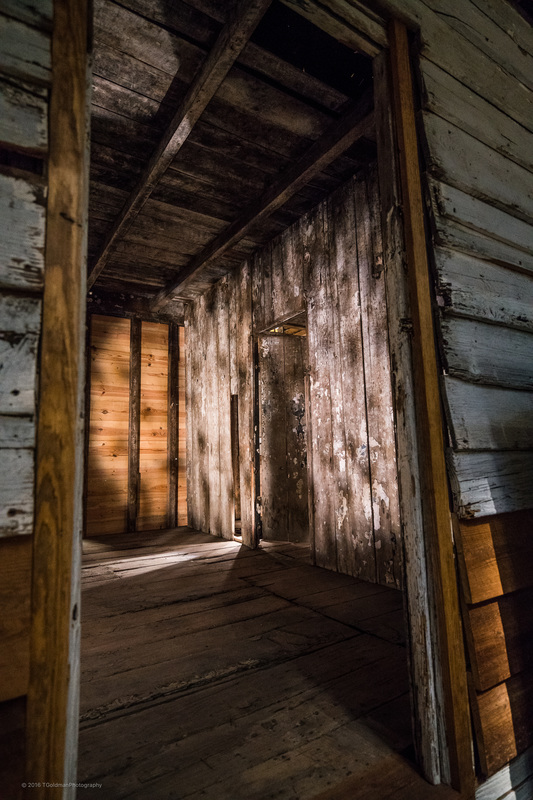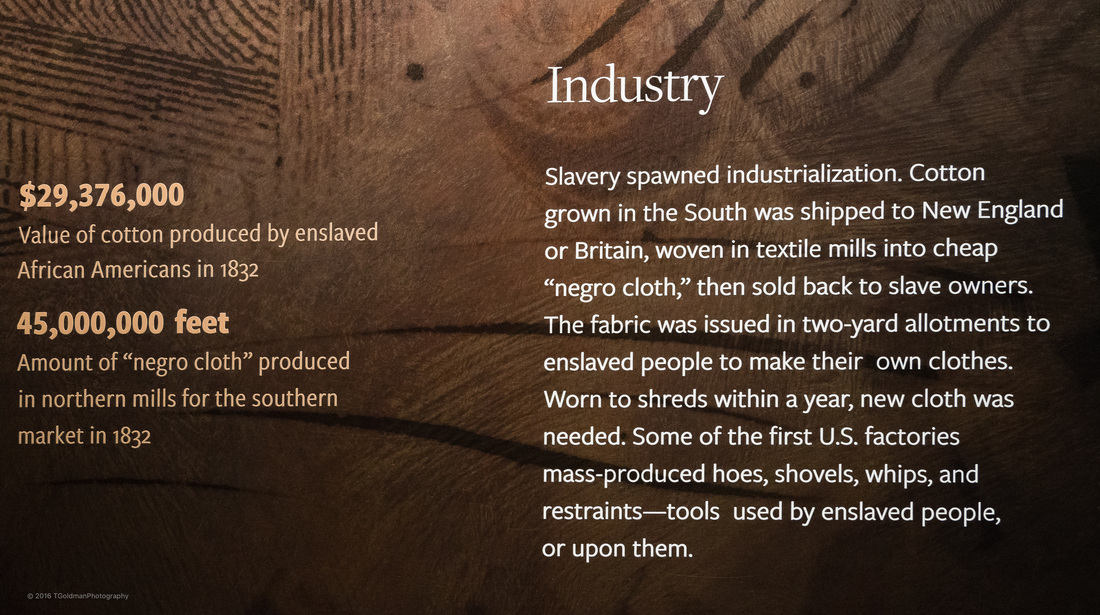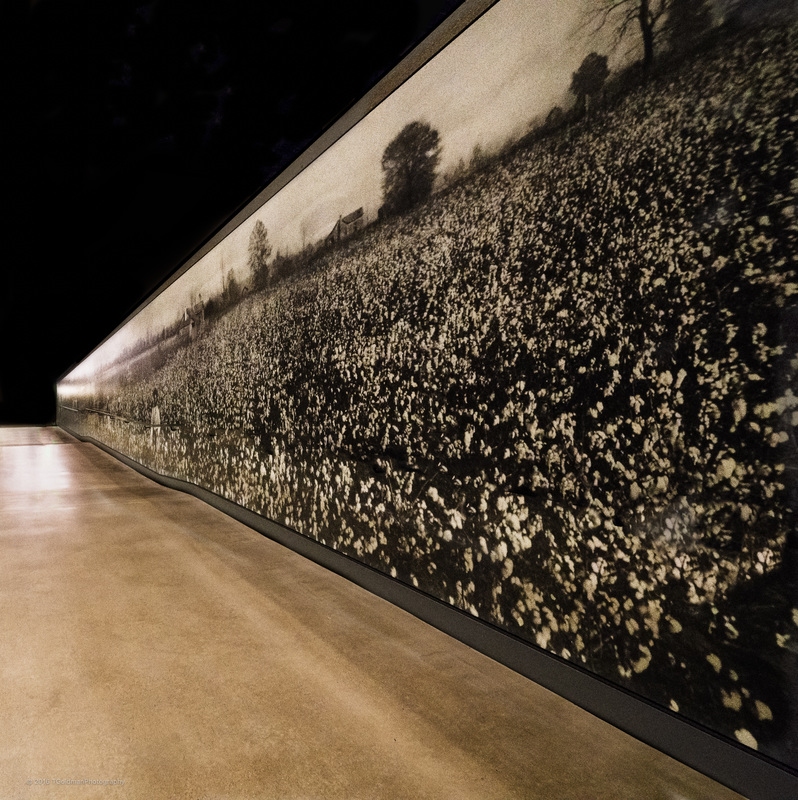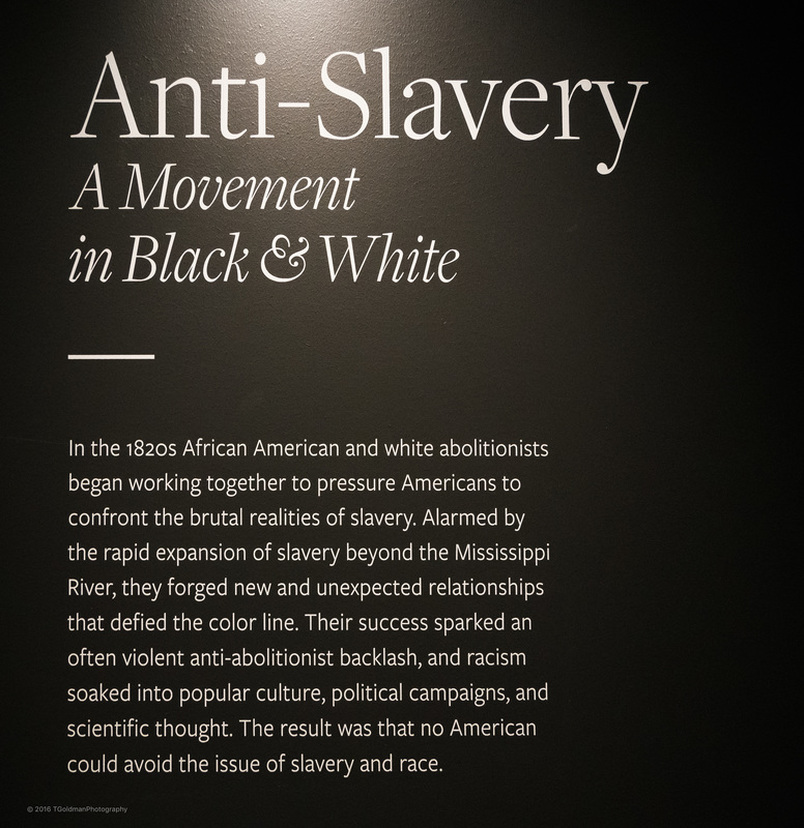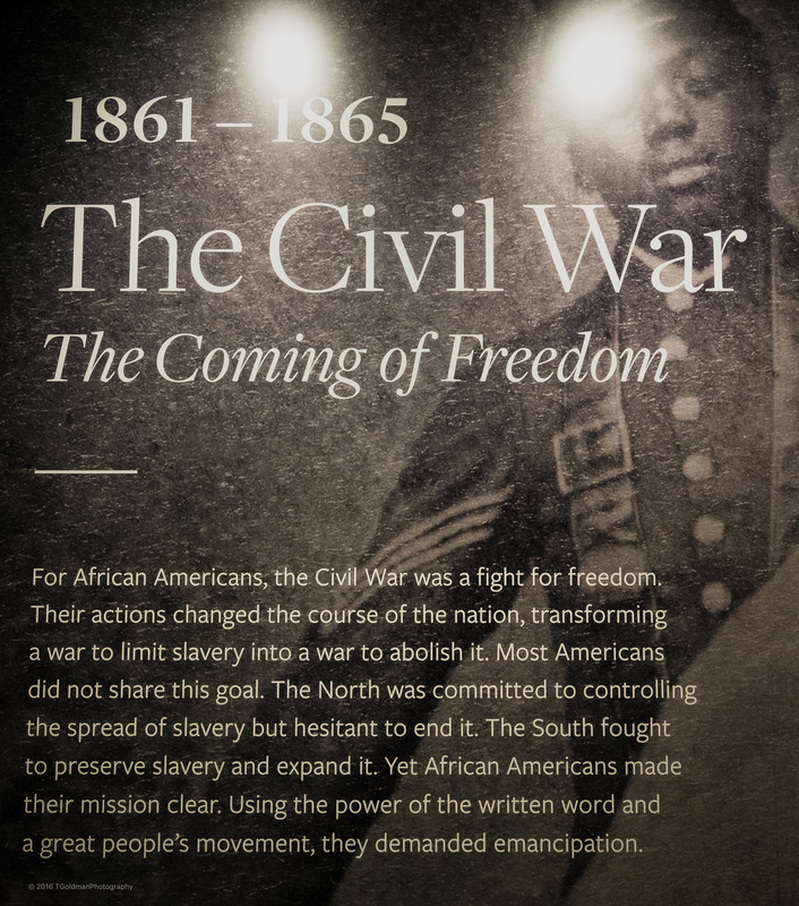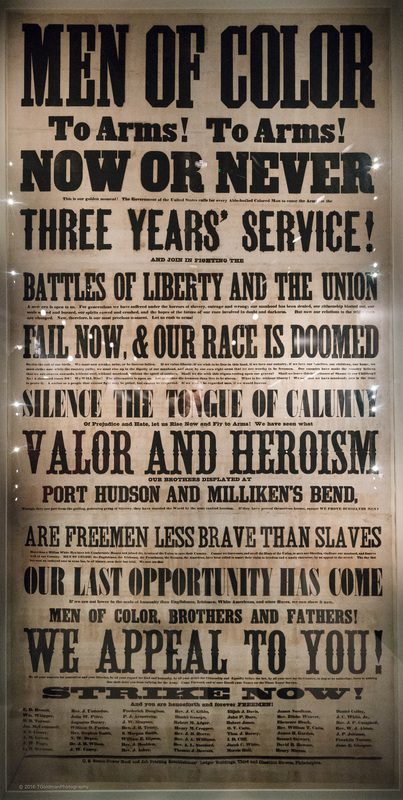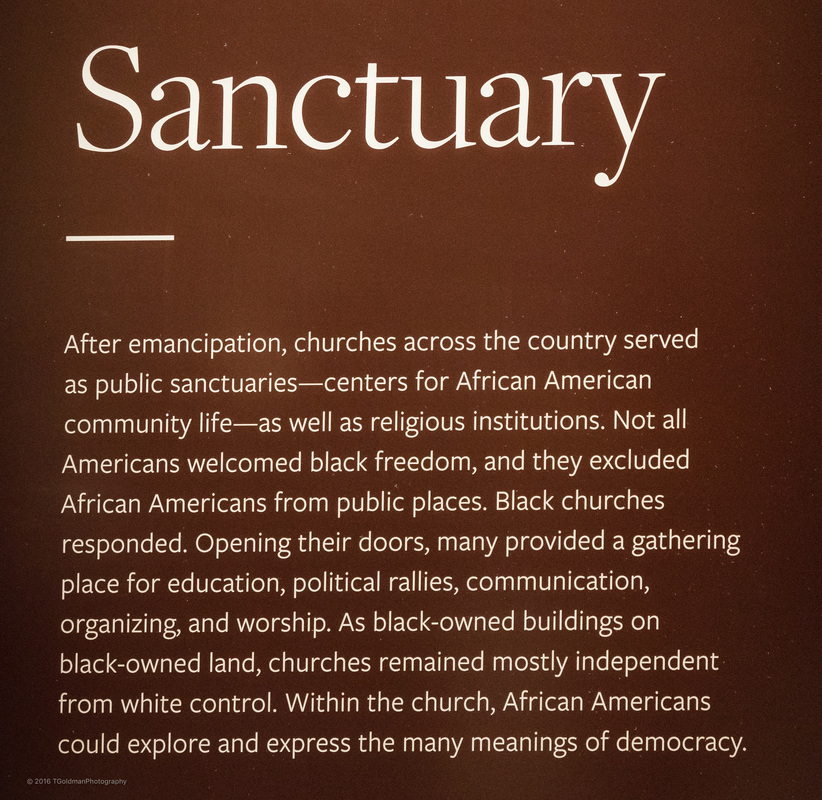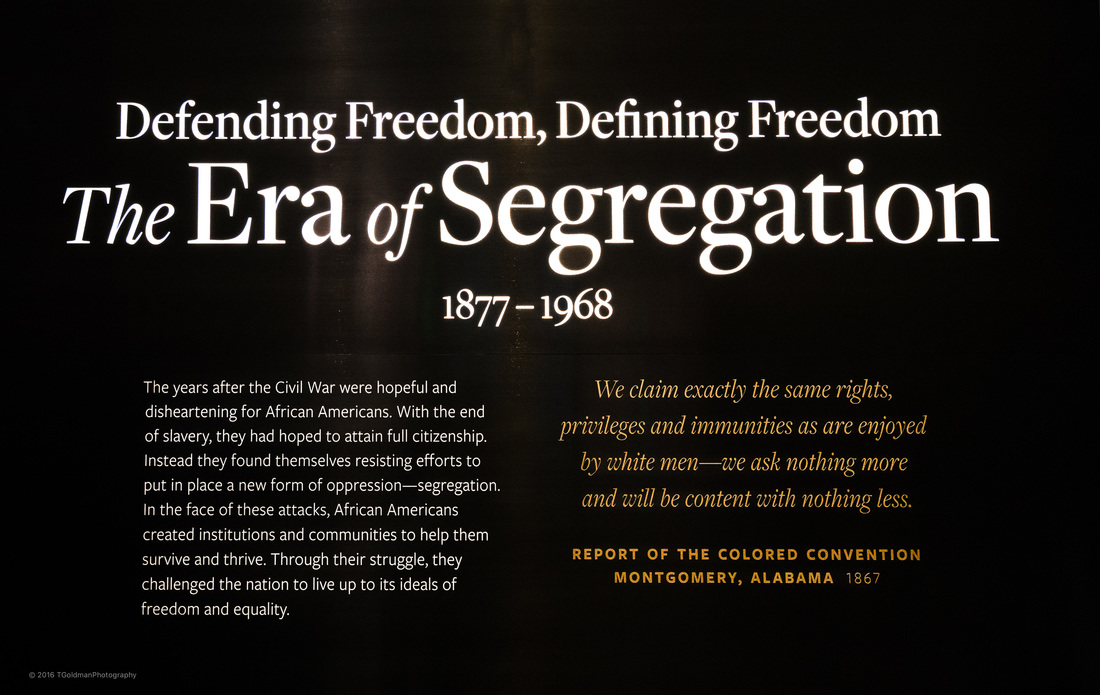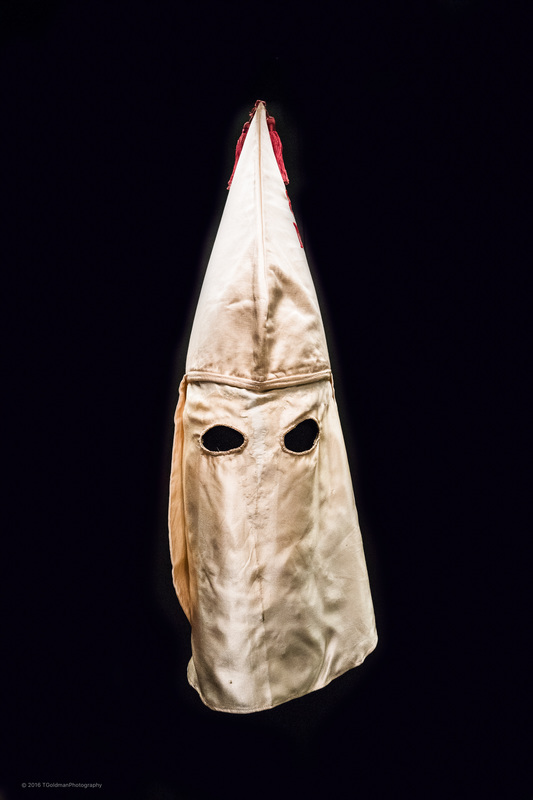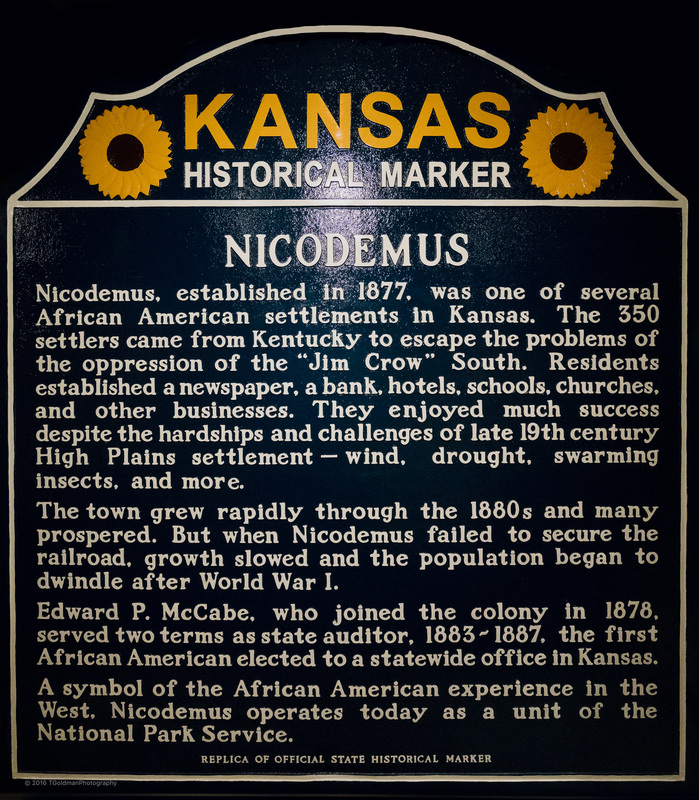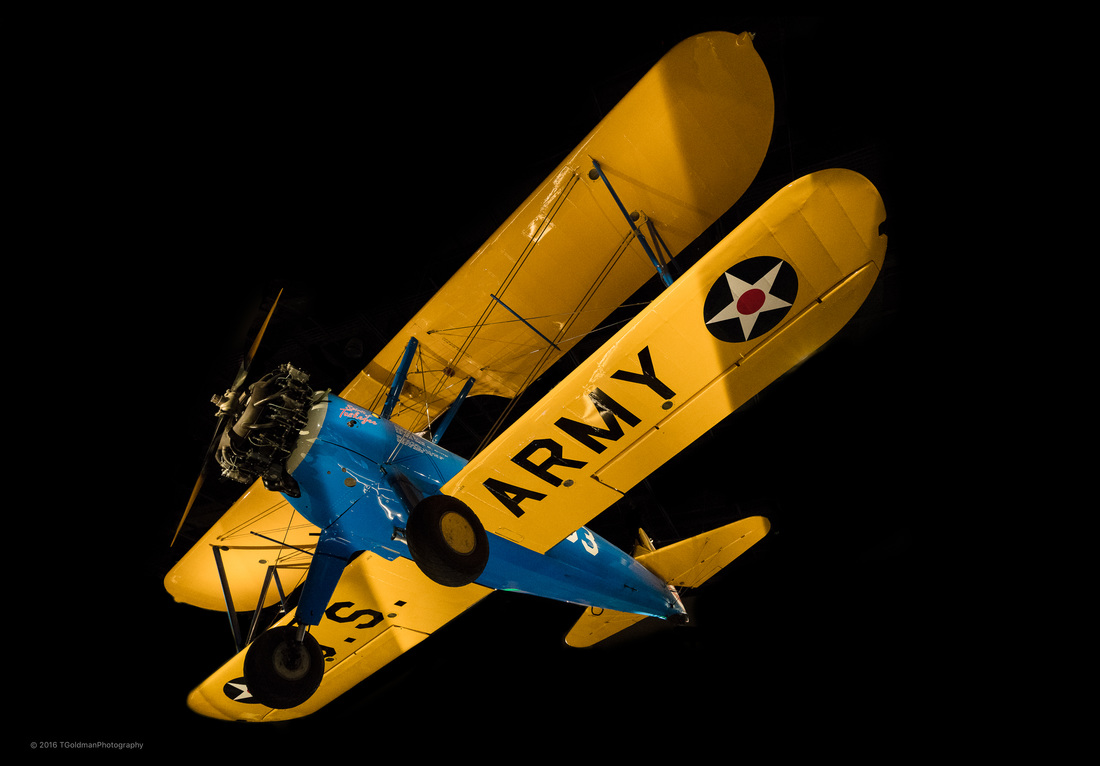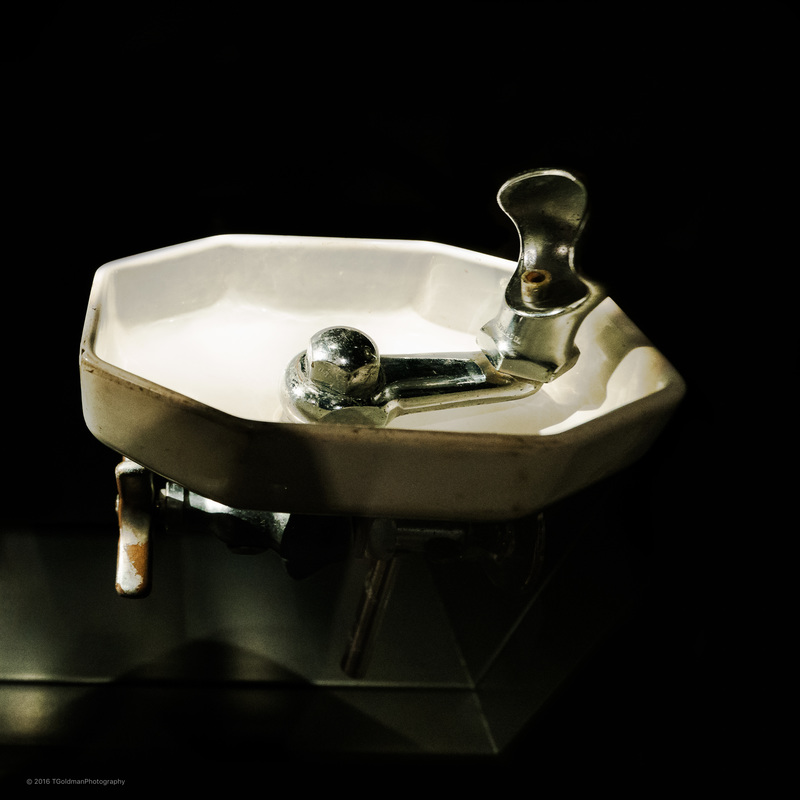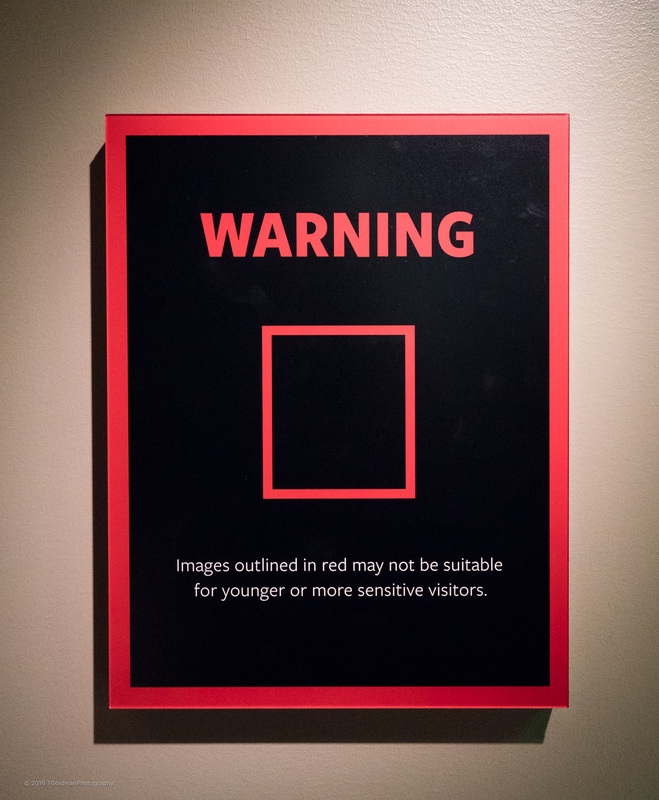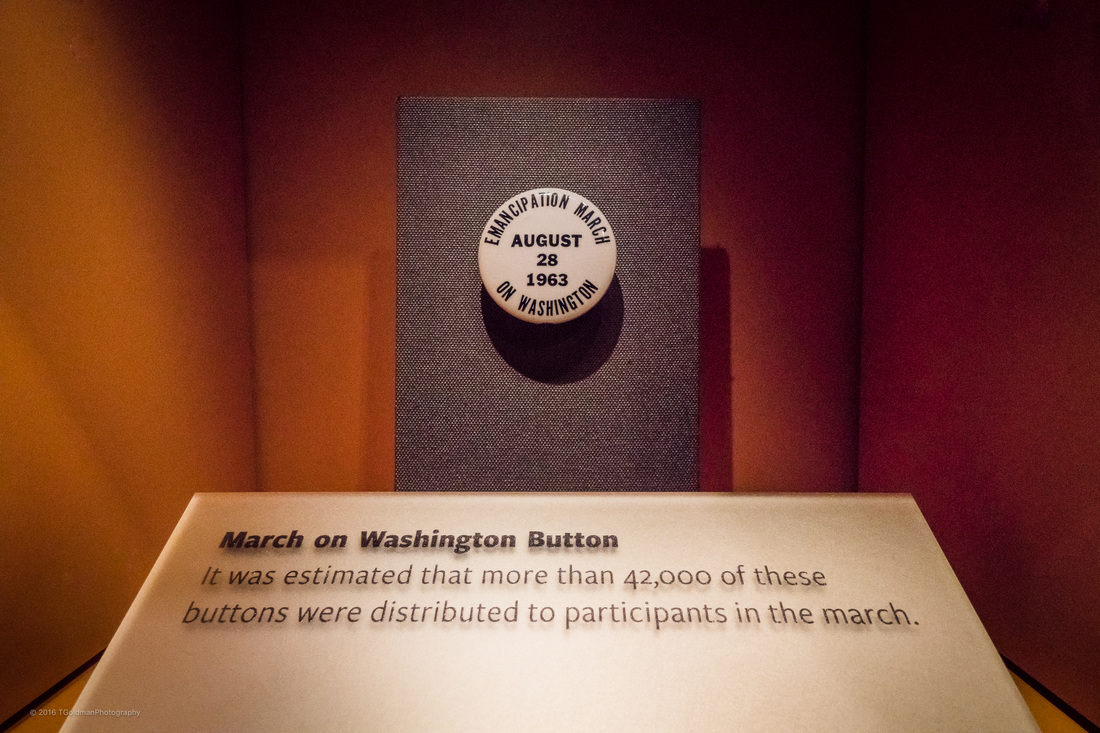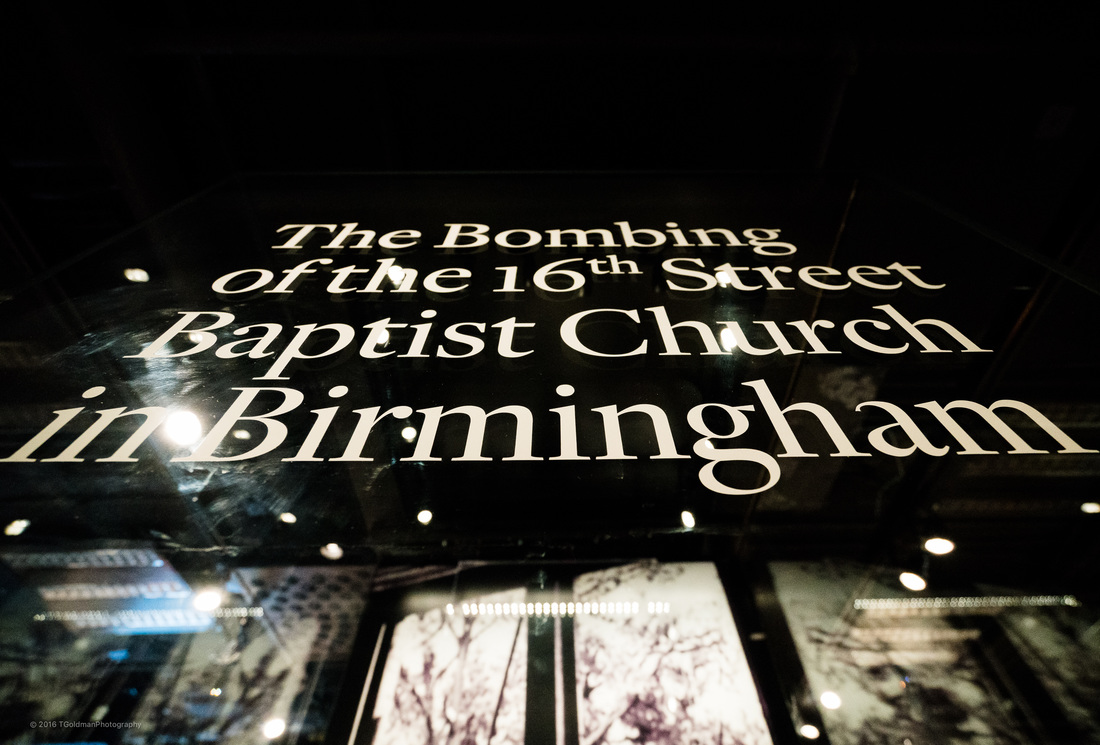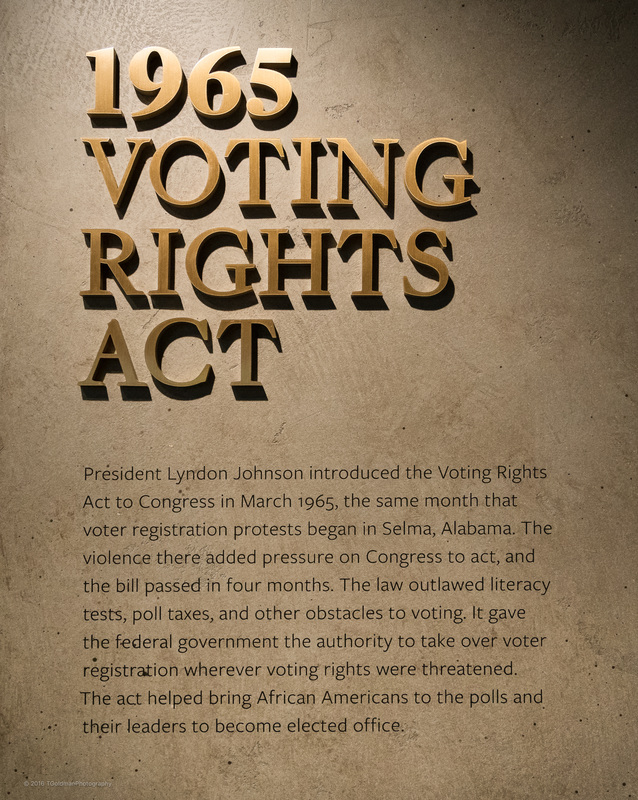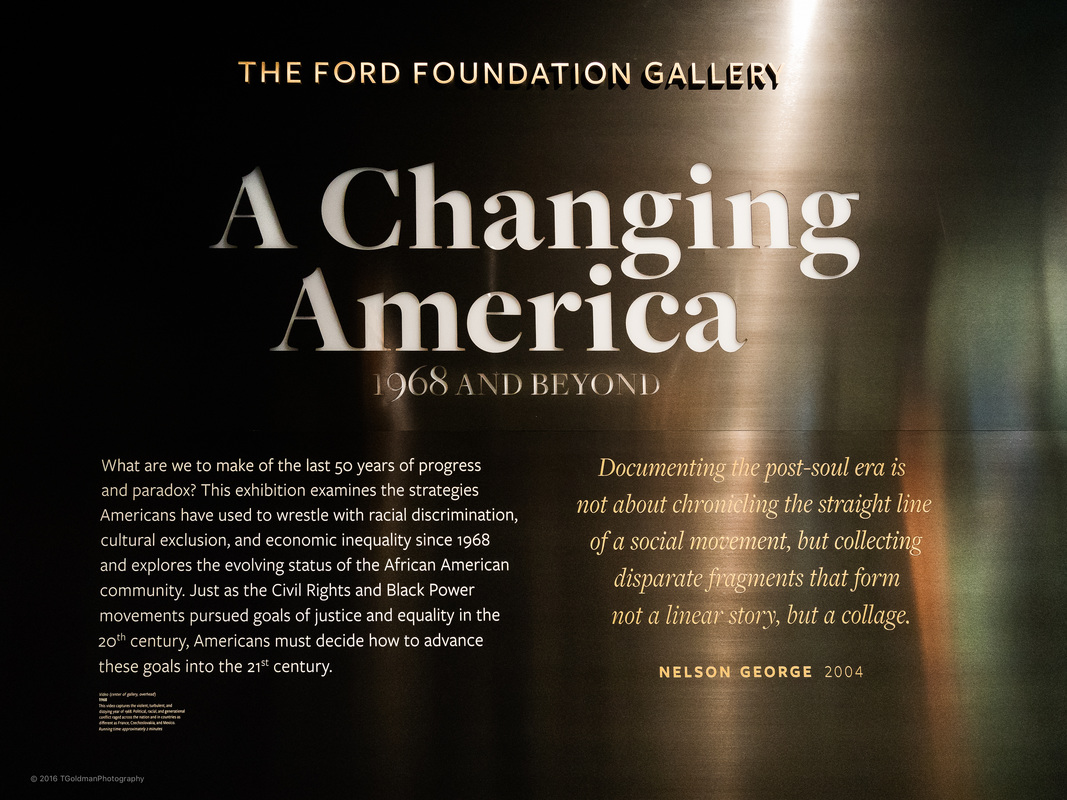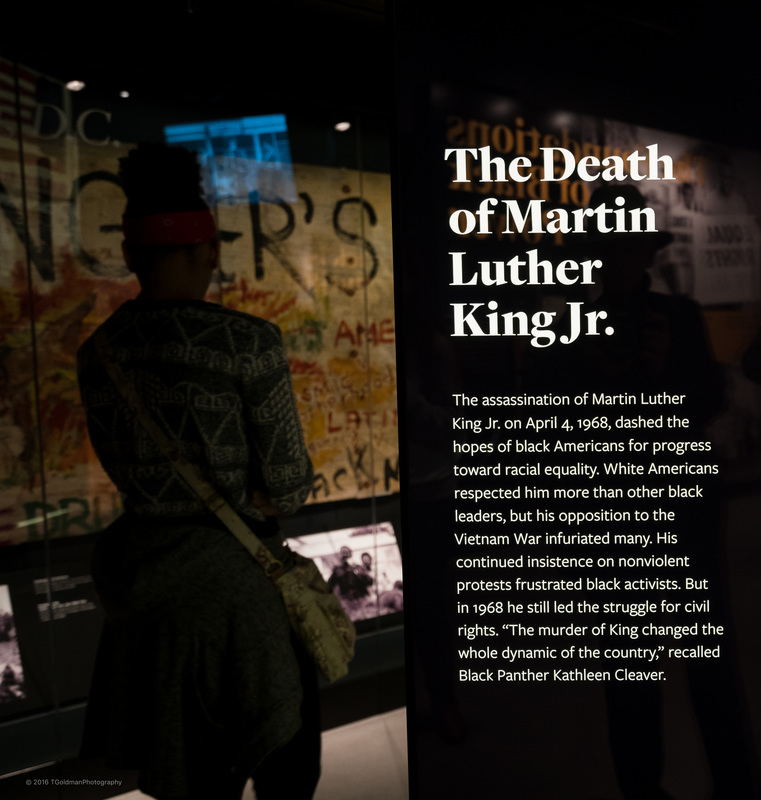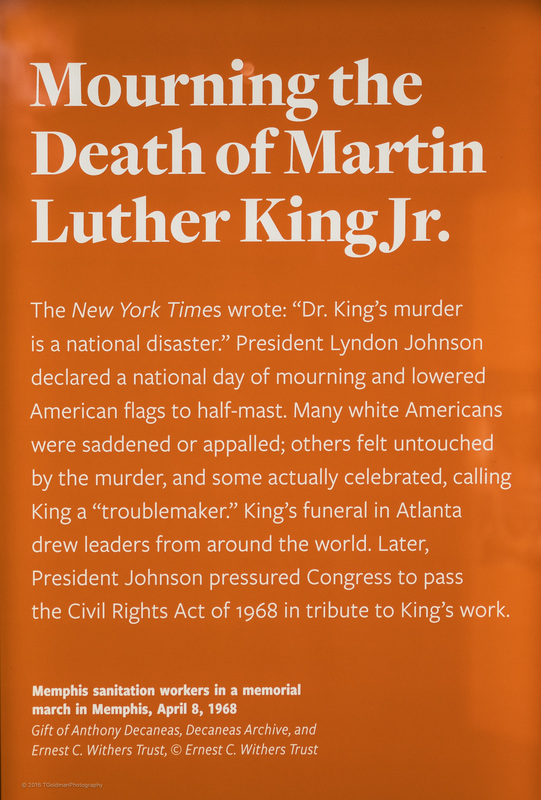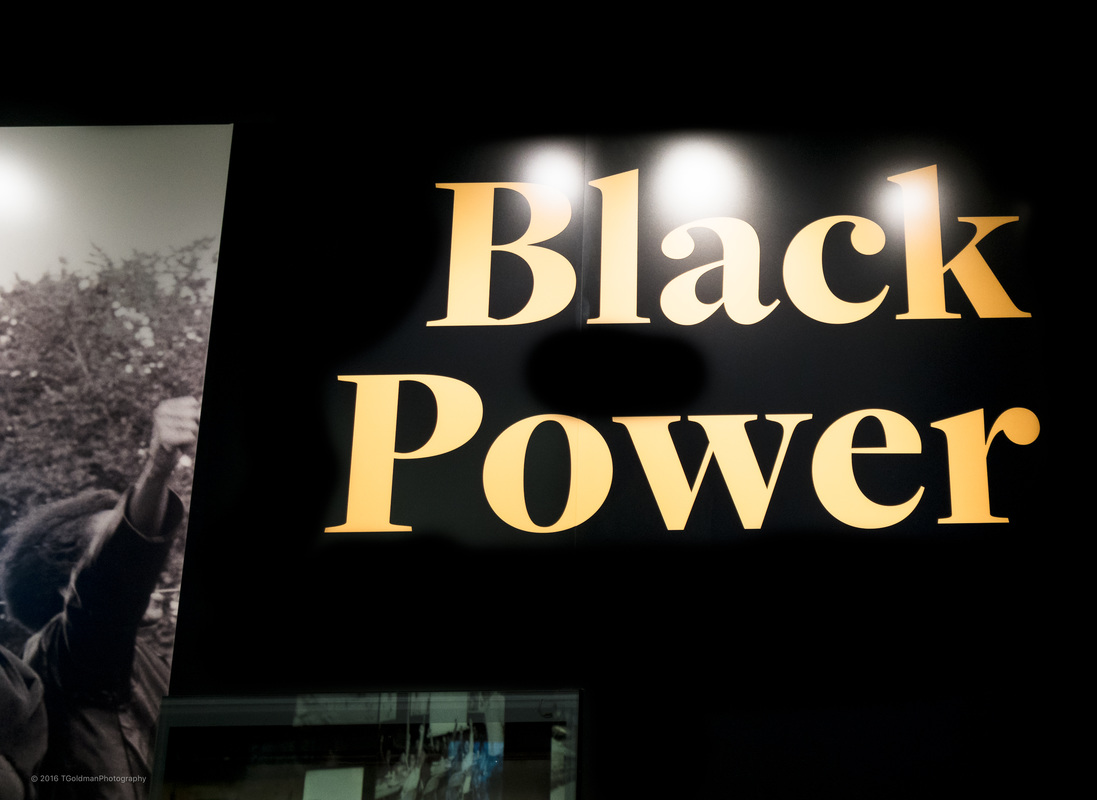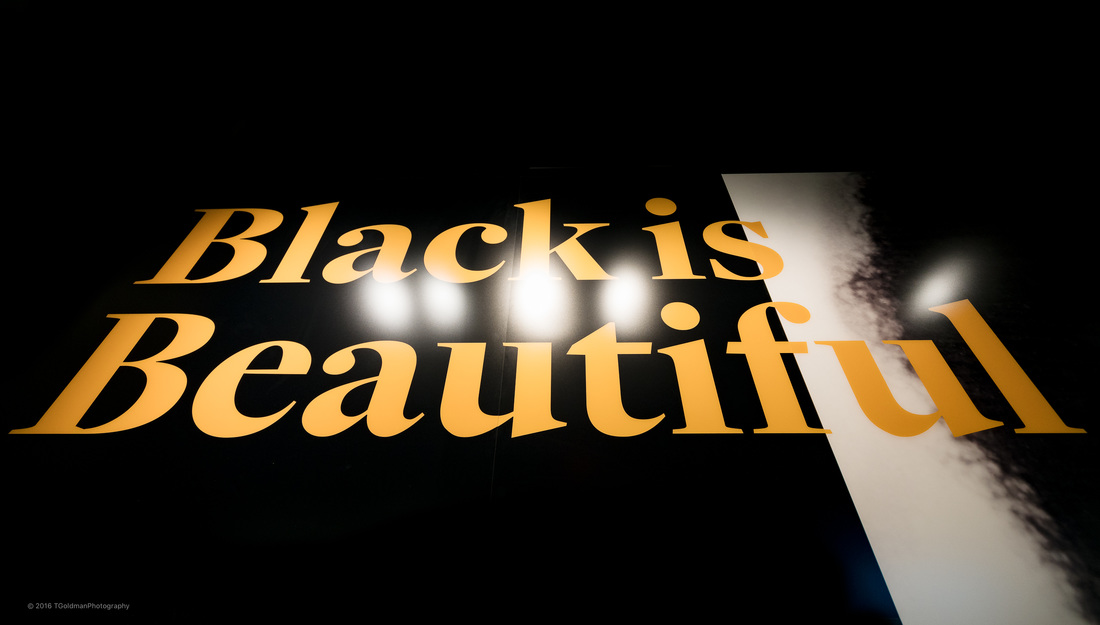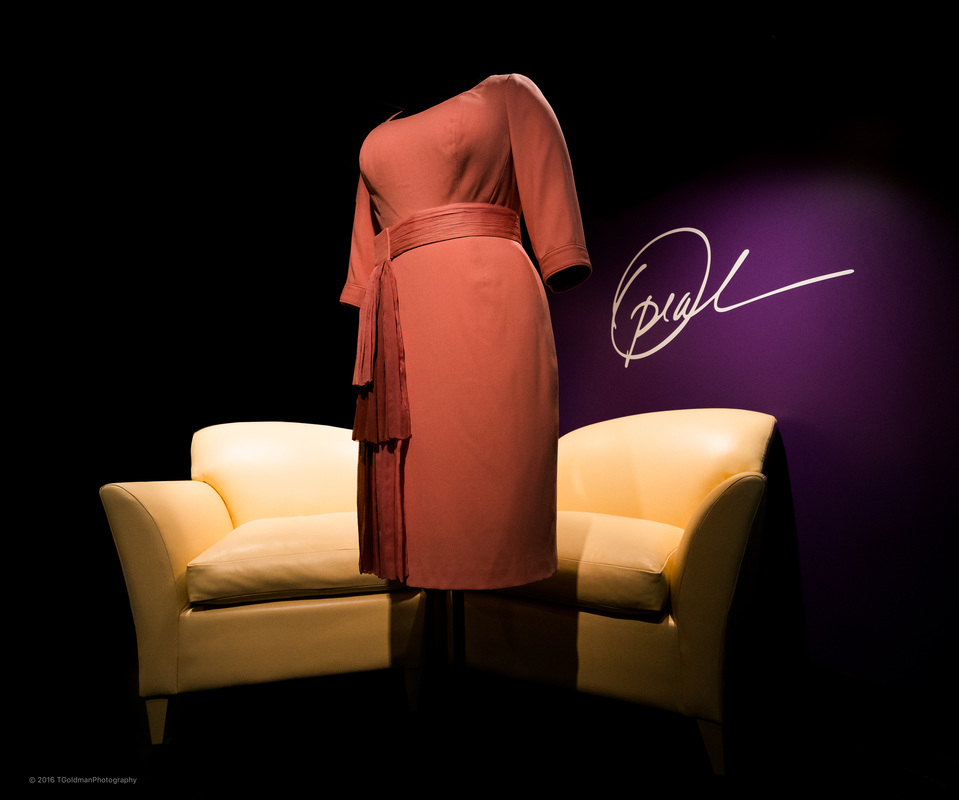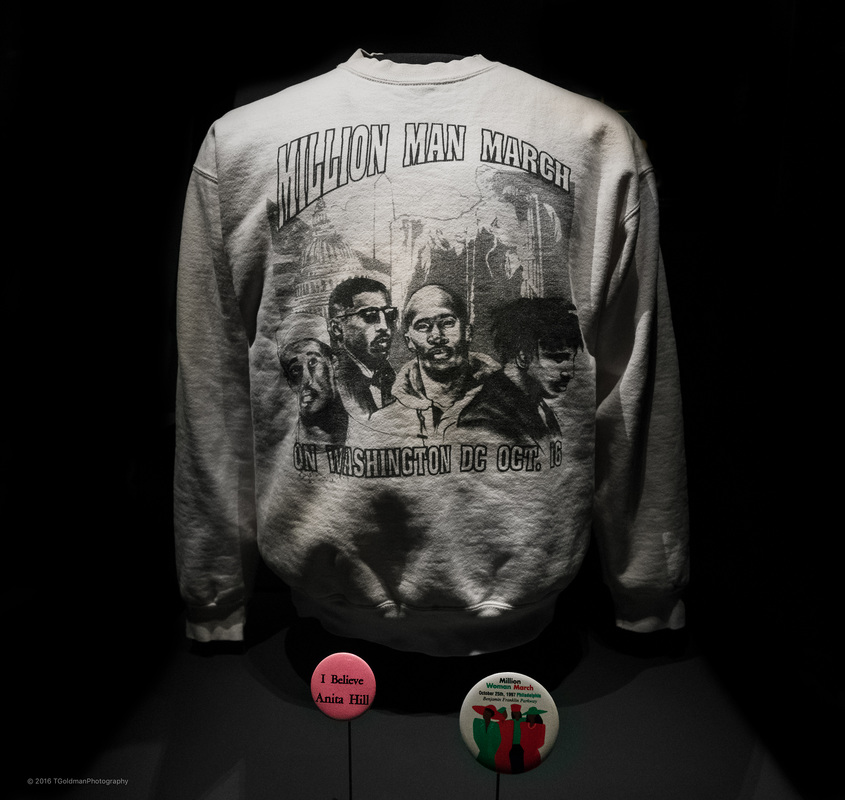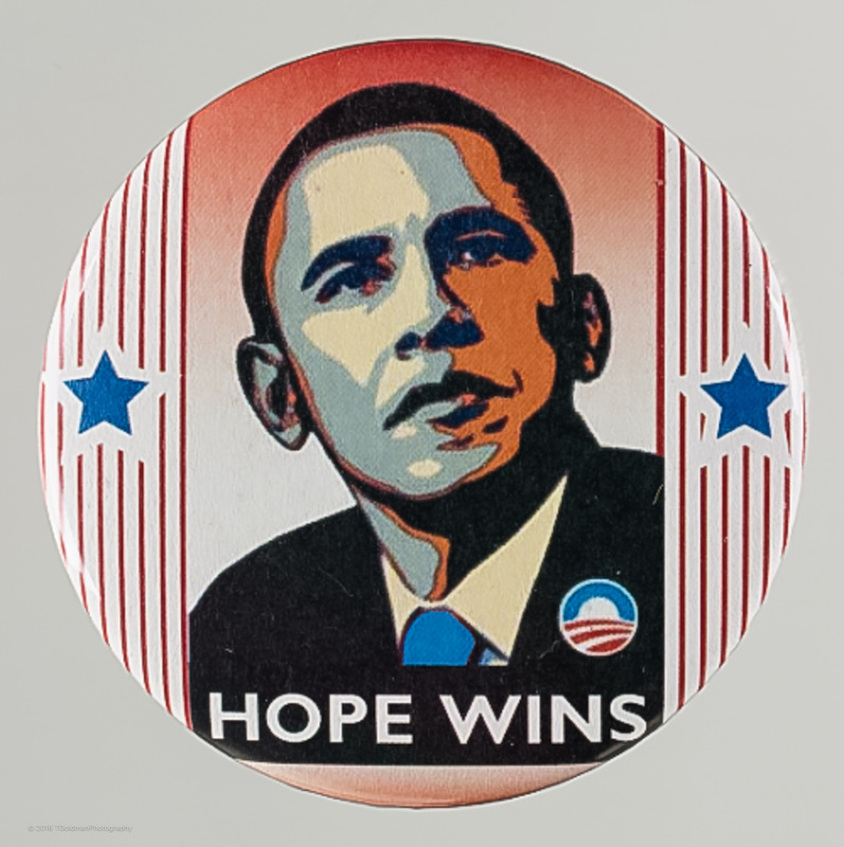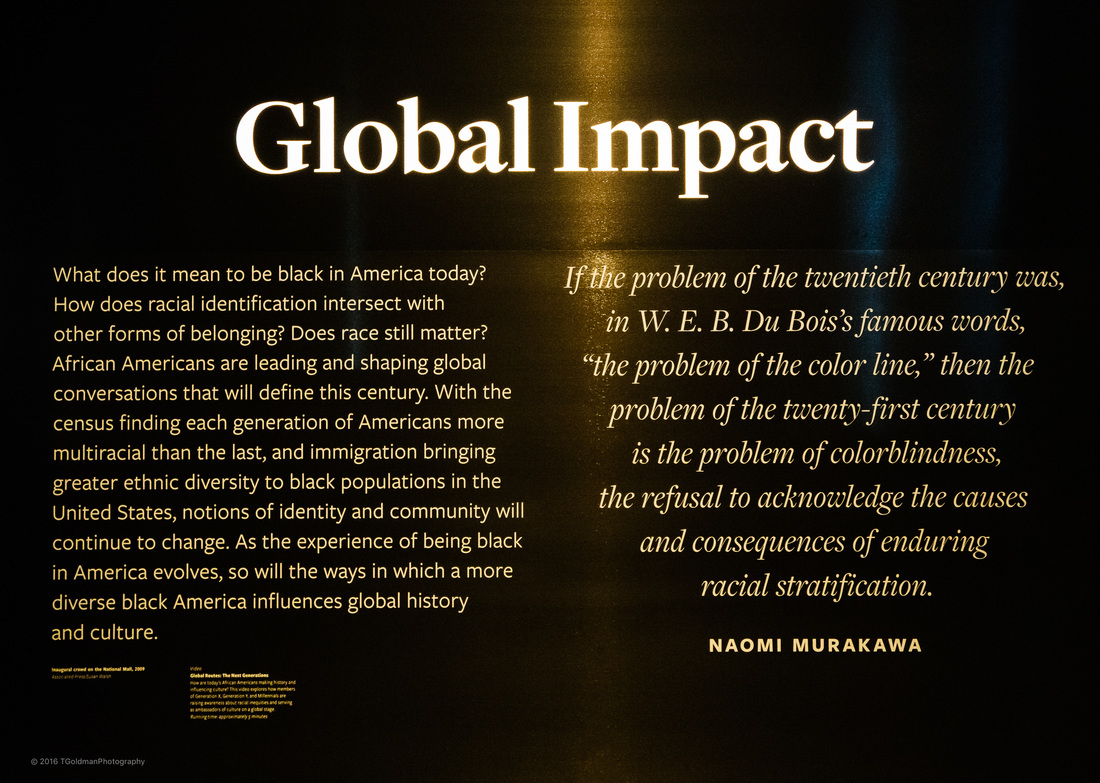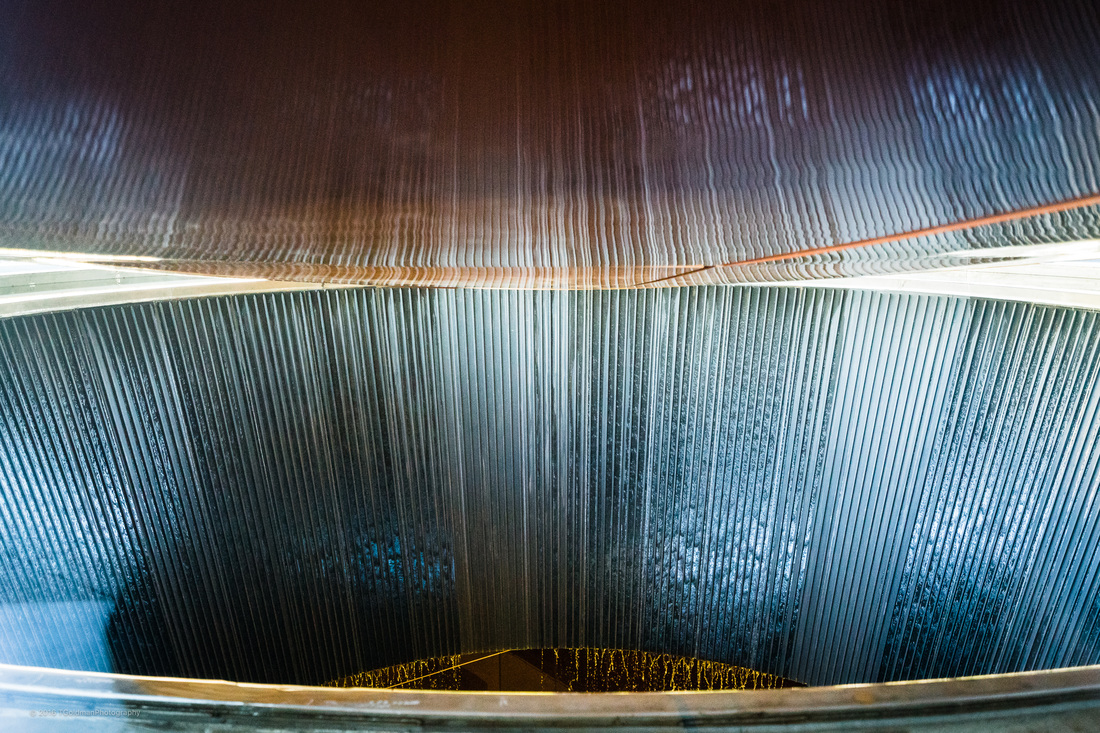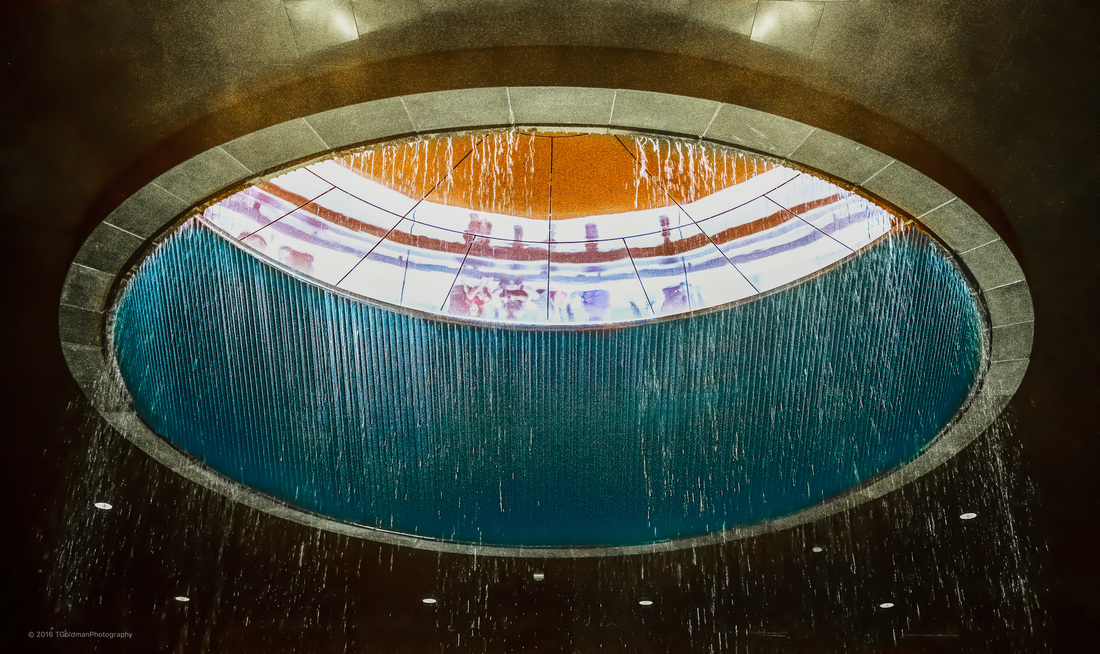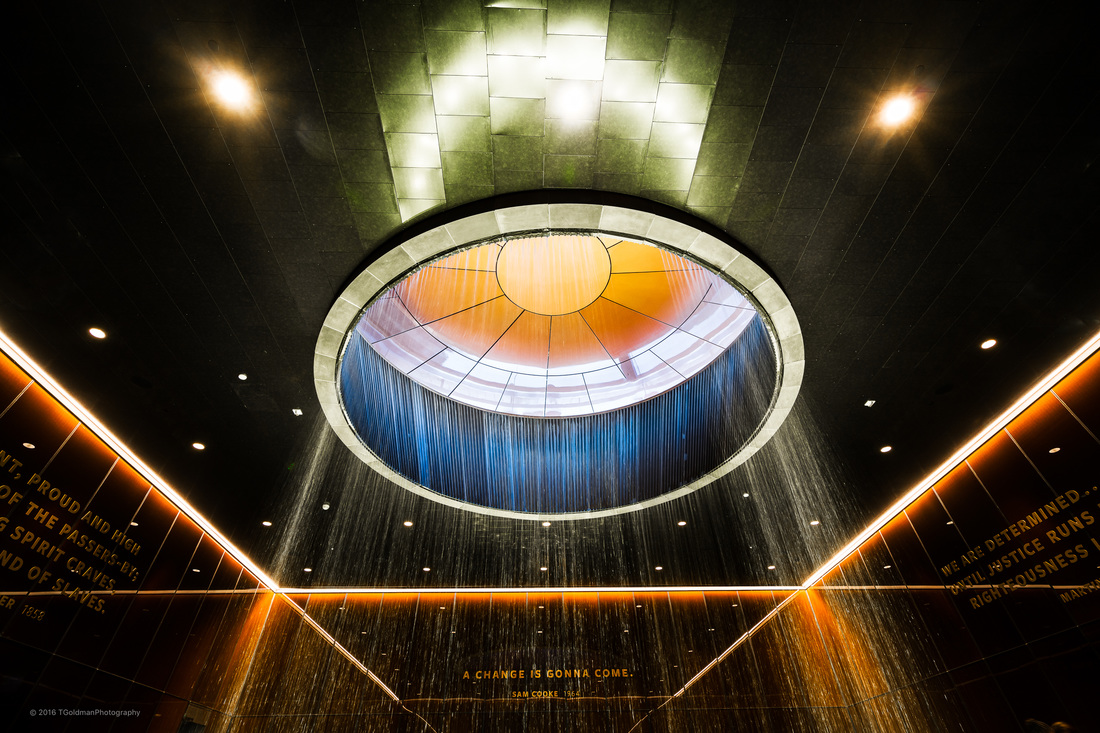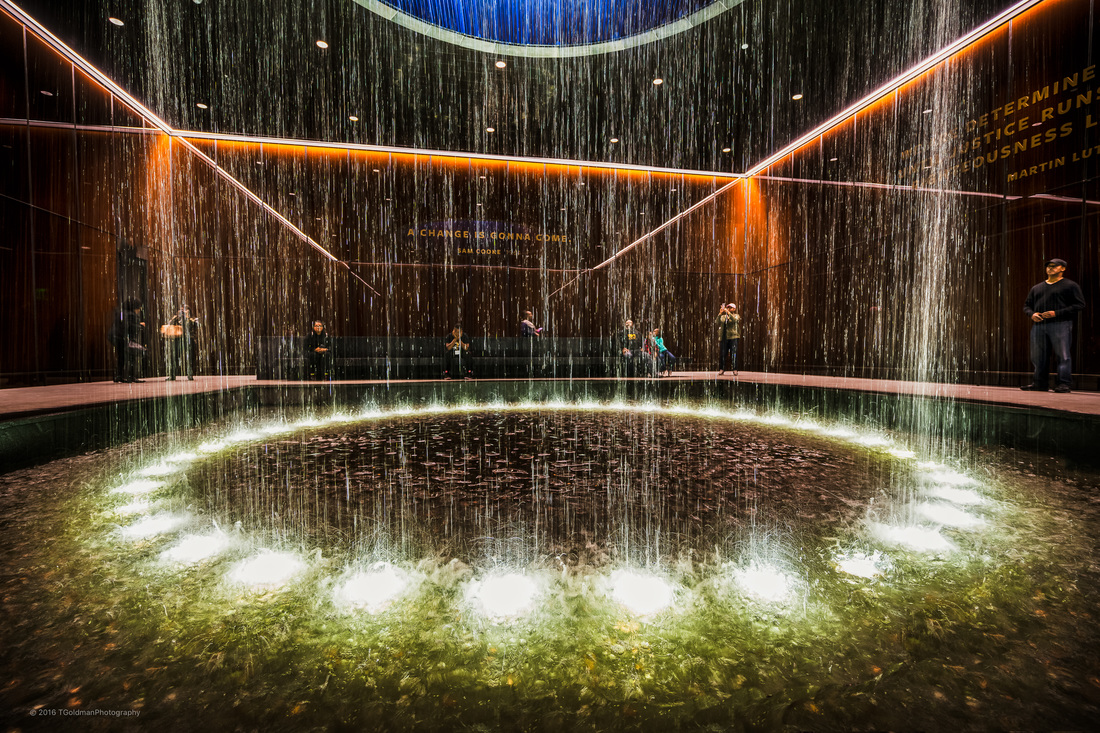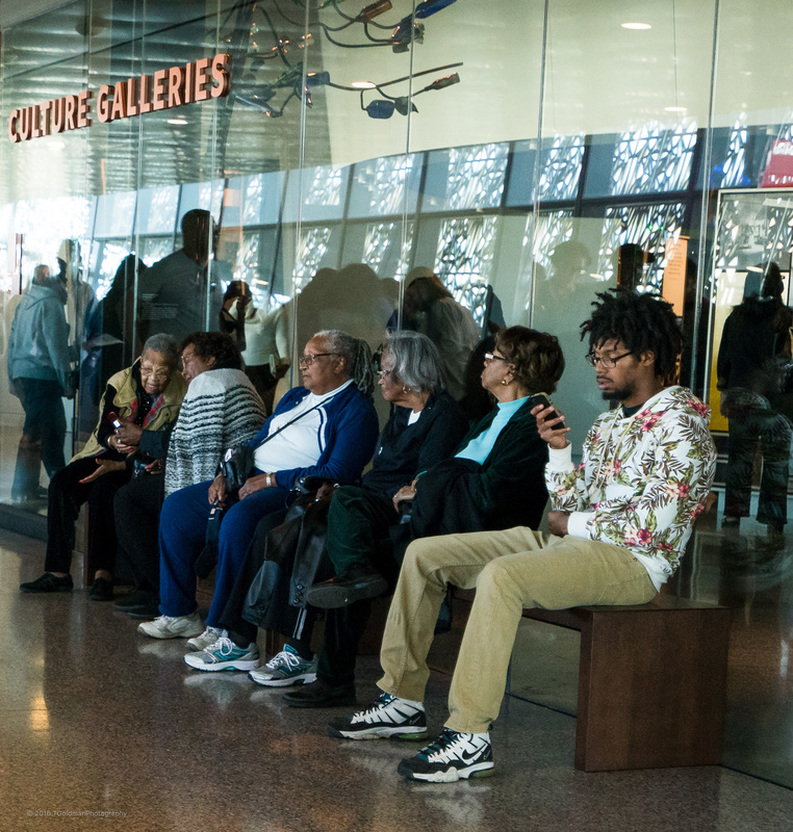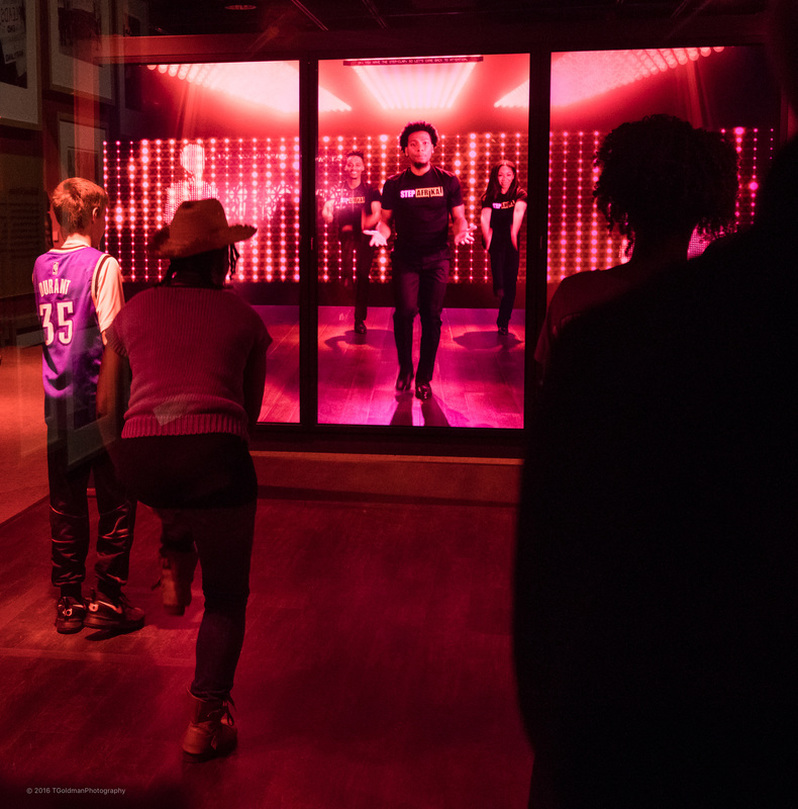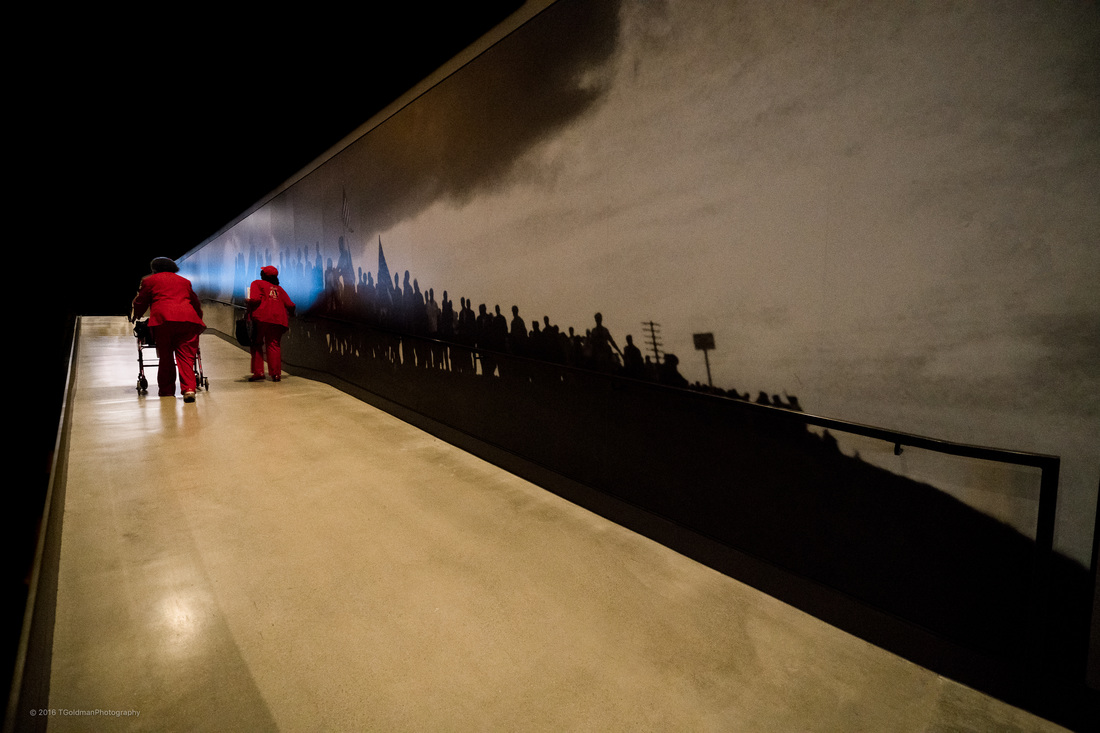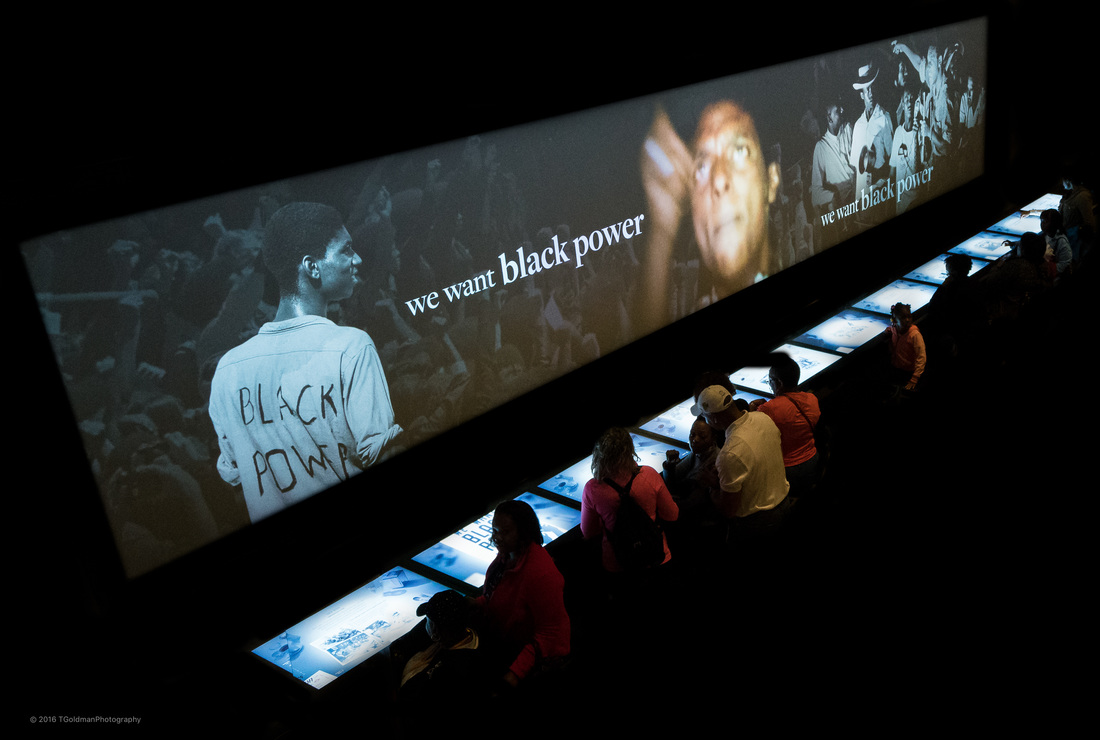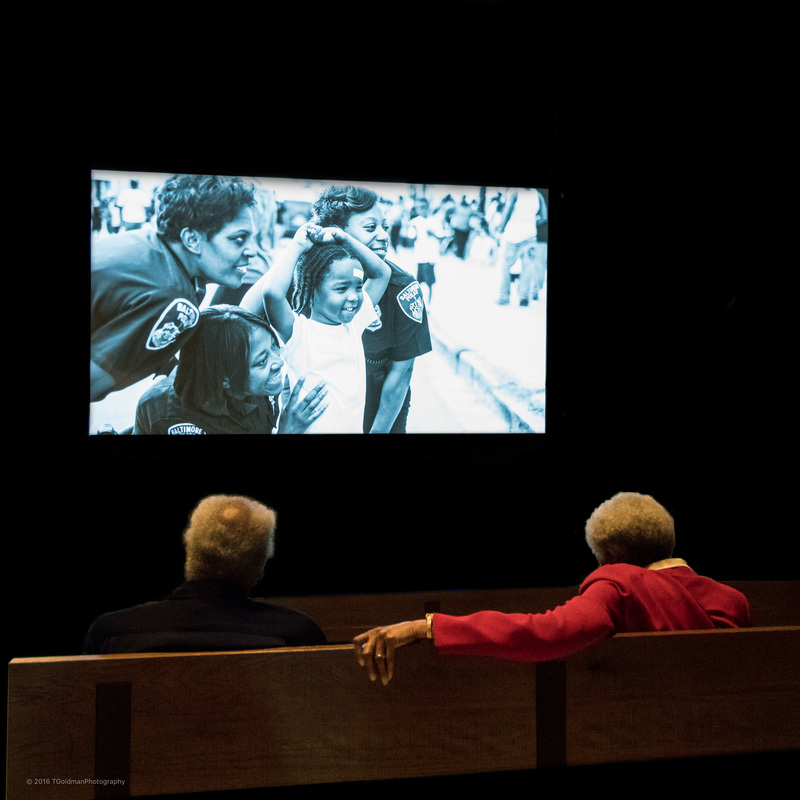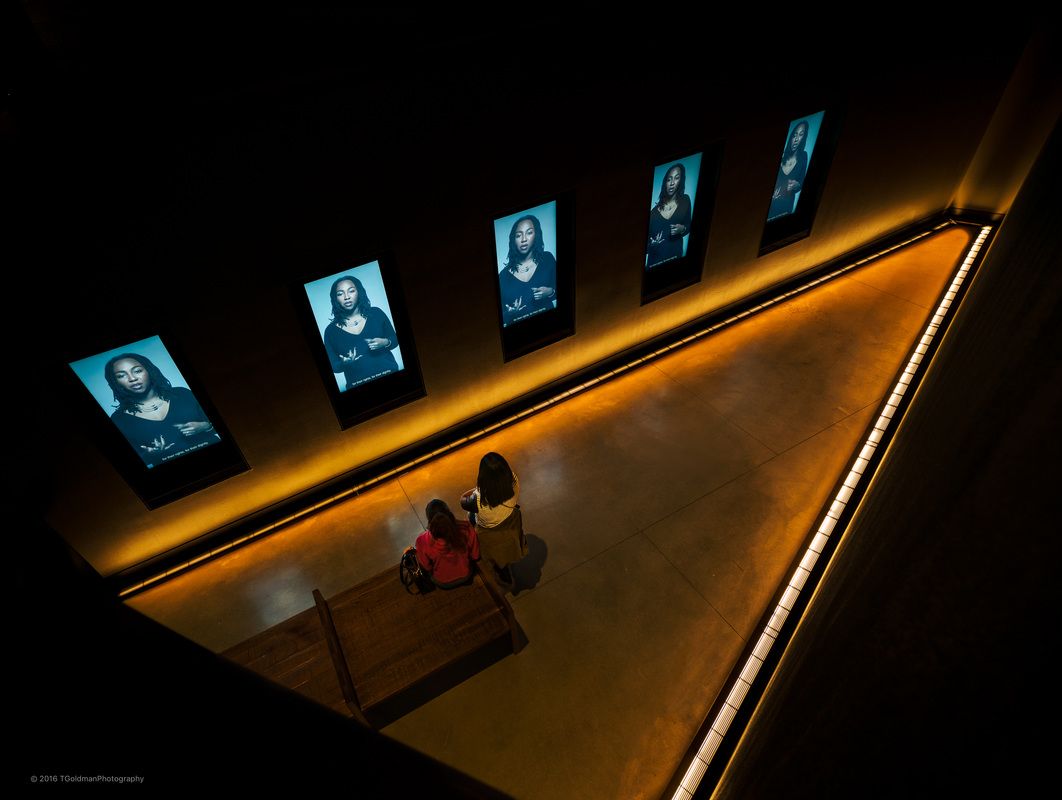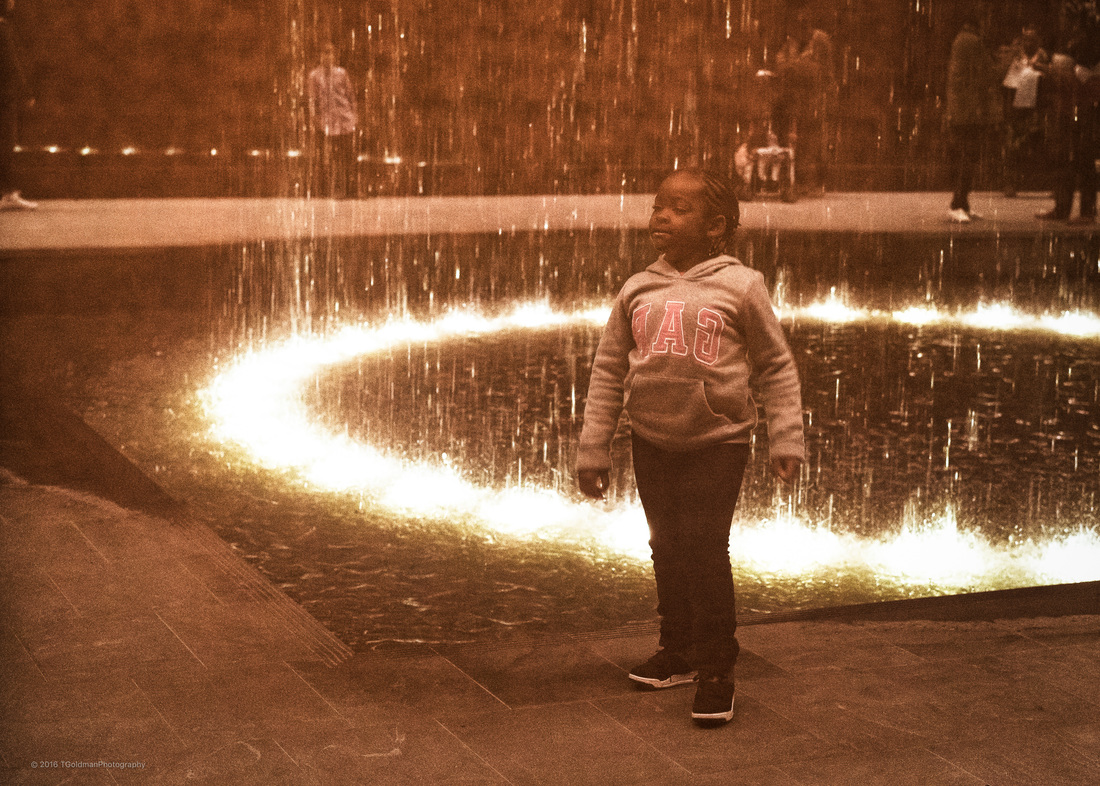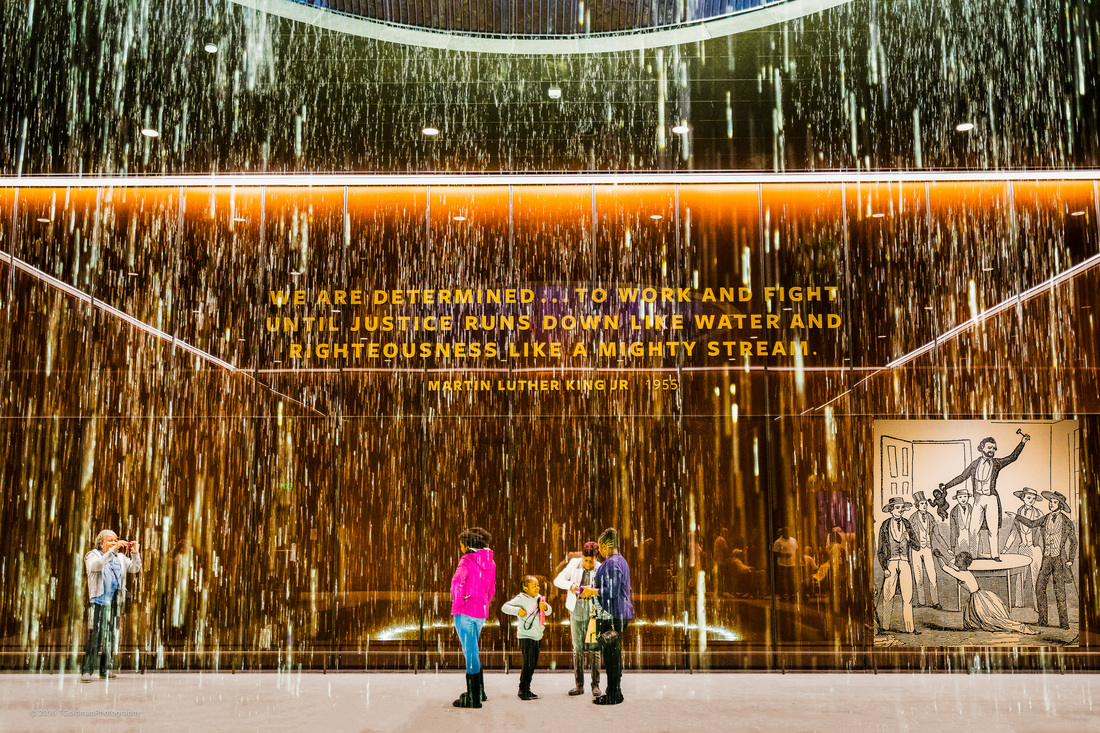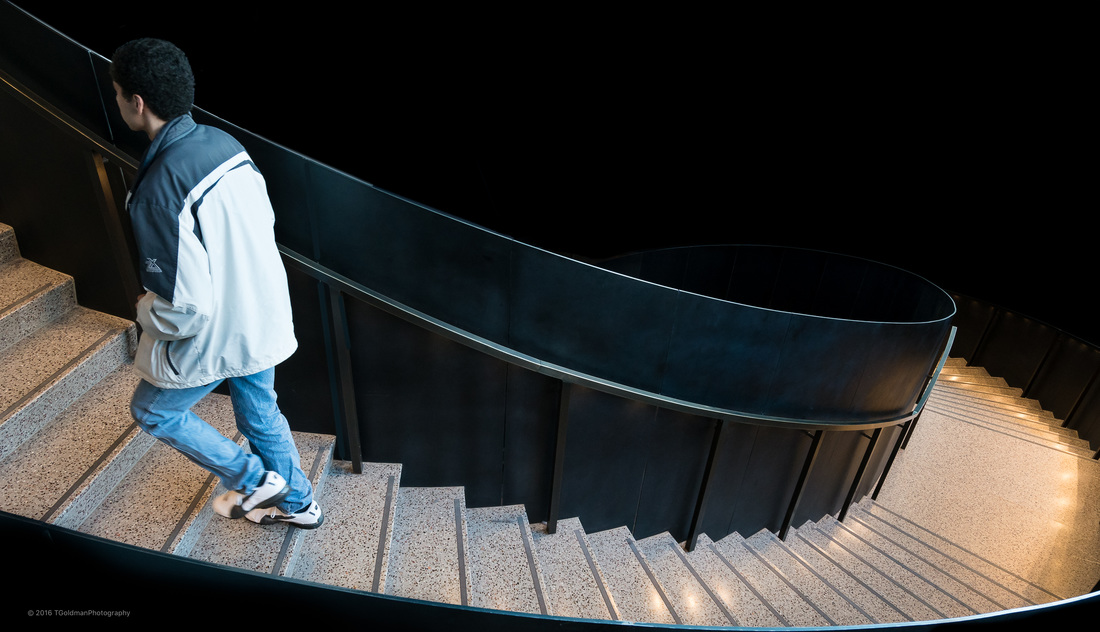NMAAHC: A Vision of Freedom Made Real
Preface
Early in 2016 I became aware that the Smithsonian National Museum of African American History & Culture (NMAAHC) would open later in the year. I was excited about this new museum and committed to seeing it early and perhaps doing a photo essay. When I heard the grand opening would be on Saturday, September 24th, I tried to get tickets, but of course they were gone instantly. I did however view the opening ceremony at the African American Museum in Philadelphia surrounded by a group of very excited and passionate people.
The following week I snapped up NMAAHC tickets for a Saturday and Sunday in mid-October. That was lucky because soon after, the museum was booked through March of 2017. I spent eight hours over those two days and that was not nearly enough time to fully take in this amazing place. My goal was to gather information and images for a photo essay.
The question was: What would be the purpose of a photo essay about this museum? Initially I thought I would explain the African American Experience. I abandoned that notion quickly because that’s the purview of scholars and in fact the purpose of the museum itself. The next idea what was something like: “What do people need to know who have no idea about the African American experience?, i.e. for white people like me. I quickly abandoned that idea as well because there is no way I would get it right and would likely offend people in the process. For example, I was one of those people who said upon hearing the words “Black Lives Matter”, that “All Lives Matter”. I simply didn't get the point. In the end I decided on an idea for a photo essay that would be correct and not controversial, at least I hoped so. This is a story about my own experience in visiting NMAAHC: “What got my attention, what I learned and what it meant to me.” My hope is this photo essay will inspire people to visit NMAAHC as well as to inspire people who may not have the opportunity to visit this amazing place.
Introduction
I feel very conflicted about race. Should we view everyone as the same or celebrate differences? I’m never sure what is meant by the “X Community". Everyone is in a different community. There’s the “Black Community”, the “LGBTQ Community”, and so on. But I’ve never heard of the “White Community”. And every day the news is filled with race. Does it matter that a person of a particular color robbed a store? But when there is the possibility of racial bias such as the repeated killings of African American men by white policeman, then it does matter. As I made clear in the Preface, I’m no scholar on these issues. But I’m burdened and saddened by racism. Mistrust of one group by another seems to be woven into the fabric of humanity and no matter how hard we try, it just won’t go away.
In visiting NMAAHC and considering a photo essay, I hoped I might understand just a little better and would be able to challenge the stereotypes that have been drilled into me during my first seventy years on this planet. I hoped to grow from this experience.
During my time at NMAAHC I was conscious of the visitors. Most people I saw were African Americans, and that certainly makes sense- this museum tells their story. But there is no question that everyone needs to experience this place, particularly people who have prejudicial thoughts and beliefs. It’s hard to imagine seeing the suffering of African Americans and the huge progress they have made, and not be changed.
It was also very noticeable that there were many older African American visitors. That also makes sense since people over sixty will well remember the terrible times of the 50’s and 60’s, and will also remember the stories handed down by their parents and grandparents.
NMAAHC has five core galleries plus other spaces. The logical order is to first visit the three History Galleries which chronicle African American history from the earliest days of slavery, followed by the contemporary Culture and Community Galleries which show the tremendous contributions made to society by African Americans.
However, when I arrived at 2:00PM on the first day of my visit, there was a two hour wait for the History Galleries, clearly the most popular part of the museum. So I visited the Culture and Community Galleries the first day and the History Galleries on the morning of the second day. This reversed order proved very significant for my emotional experience. After seeing the significant contributions made to modern society by African Americans, the tragedy exposed in the History Galleries added intensity to the question: “How could people so controlled, abused, and tortured rise to the level they have?” And that is clearly “the story within the story”.
As this was a very emotional experience, I’ve organized this photo essay by the emotions I felt.
Beauty
The first part of the experience was the building itself. I already knew what it would look like, but whenever you see something in person for the first time, it may be as expected, disappointing, or greater than expected. I stayed in a hotel near Union Station which is a 40min walk on Constitution Avenue. As I passed by one monolithic building after another I wondered what my initial sighting of NMAAHC would feel like. Then I saw it and my first thought was: “It’s amazing, but looks like it doesn’t belong.” But that’s precisely why it does belong. The struggle of African Americans has been to belong equally at all levels of society, but still retain their uniqueness. The building makes that statement to me.
I was struck by the “skin” of the building. It looked almost chocolate when I first saw it. Perhaps it’s meant to look like African American skin. But the color changes depending on the light that falls on it: grey, ebony, golden. And the intricate latticework seemed to speak of the intricacies of the African American experience.
To some extent I was so captivated by the beauty of this building that it took away from the main purpose, but I wouldn't have had it any other way.
-----
NMAAHC viewed from the North on Constitution Avenue. The early morning sun from behind makes the building appear like a silhouette. Neighboring buildings are embraced in its mirrored glass windows.
-----
NMAAHC viewed from the South on the Mall. Direct morning sun brings out the golden color hidden in the facade’s panels. Openings provide specific views of the Washington D.C. landscape around the museum.
-----
Close-up of one of the thousands of panels that make up the facade.
-----
Every angle offers beautiful views of this extraordinary building.
-----
NMAAHC occupies an exalted location across the street from the Washington Monument. Perhaps the only preferable home would be at the Lincoln Memorial.
-----
Wherever you look there is interplay between these two iconic structures.
-----
NMAAHC provides the Washington Monument a mirror to see its own beauty. Perhaps the somewhat tarnished reflection speaks to George Washington's ownership of slaves.
-----
At dusk on a bright afternoon when the sun slips behind the Lincoln Memorial to the West, it becomes bronze.
-----
When darkness finally arrives, NMAAHC allows us to see into its soul.
Amazing
The top floor of NMAAHC houses the Culture Galleries and this was my first stop. After passing under a beautiful sculpture, I entered a very crowded and loud circular space. The upper level of the outside wall is a projection screen showing stills, videos and messages about the African American experience. At ground level there is a series of display cases with text, photos and artifacts describing the impact of African Americans on society. Another section of this floor is dedicated to musicians. There was so much to take in that it was a challenge to decide what was important to capture. One could spend hours just on this floor alone to really absorb it. The total experience of NMAAHC requires days.
As I read through the many contributions made by African Americans, I had an eery feeling of having landed in a new country and this display tells the story of an amazing people who created an advanced society and culture from nothing. And that country is America.
It’s impossible to fully cover the Culture Galleries for this photo essay, so I will only share a few examples that particularly called out to me. It was the artists and artisans that got my attention.
-----
This sculpture welcomes visitors into the Culture Galleries.
-----
Everywhere you look there are sights and sounds to stimulate thought and reflection.
-----
One of the many messages about the contributions of African Americans.
-----
As so often happens, art emerges out of the hardship.
-----
Metalwork of Phillip Simmons: “My instrument is an anvil… That anvil fed me when I was hungry. That anvil clothed me when I was naked. That anvil put shoes on my feet.”
-----
Sweetgrass basket of Mary Jackson.
-----
Jewelry of Art Smith.
-----
Silk scarf of Kermit Oliver.
-----
And the music.
-----
Chuck Berry’s 1973 Cadillac was driven on stage at the Fox Theater in St. Louis in 1986. This theater turned him away as a child because he was black.
-----
Chuck Berry’s guitar. John Lennon: “If you tried to give rock and roll another name, you might call it ‘Chuck Berry’.”
-----
Lead Belly’s guitar. He made the 12-string famous.
-----
Louis “Satchmo” Armstrong’s horn. He was beloved by his fans.
-----
Michael Jackson’s costume. The greatest entertainer of all time.
-----
The artistry of words was used to bring about change.
Profound
The next level in NMAAHC is the Community Galleries. What got my attention was sports. I’m not a sports person by any means, but I’m aware sports has the profound ability to bring about change. By reaching the top of their games and achieving many “firsts”, African American athletes have used their platforms to make a real difference in beliefs and attitudes. To me, this is their greatest athletic achievement and I was glad to be reminded of some of these people.
-----
“Mexico City Olympic Protest: On October 16, 1968, Tommie Smith, John Carlos, and Australian Peter Norman staged one of the most iconic and important protests against racial discrimination. Shoeless and dressed in black socks, each American athlete wore a black glove on one hand. Smith and Carlos stretched the two black gloves high into the sky to symbolize power and unity. Smith wore a scarf that signifies “blackness”. The black socks stressed the poverty plaguing black America and their bowed heads represented their prayers for black Americans.” NMAAHC presents a stunning sculpture to honor this iconic image. Almost fifty years later we are seeing similar statements on the playing field.
-----
At the 1984 Olympic Games in Los Angeles, decathlete Rafer Johnson used this torch to become the “first” African American to light the Olympic flame.
-----
Jackie Robinson changed the face of Major League Baseball in 1947.
-----
Jesse Owens smashed Hitler’s myth of Aryan supremacy at the 1936 Summer Olympics in Berlin.
-----
The “greatest”. He came into world view as arrogant and brash, but left the world as one of the most beloved figures in a generation.
Horrifying
The next morning I was first in line at opening which allowed me immediate entrance to the History Galleries which occupy three floors below ground. Groups of about twenty people file into a large elevator for the journey to the deepest floor: “Slavery and Freedom 1400-1877”. Through the window a time-line is visible as the elevator descends. No one talked. There was an ominous feeling of going to a very bad place- a horrifying glimpse into a deplorable American past. But somehow the African American spirit won over this oppression.
-----
NMAAHC taught me something I didn't fully appreciate- the extent to which the economic engine of the United States was built on the backs of African Americans: “Their lives were embedded in every coin that changed hands, each spoonful of sugar stirred into a cup of tea, each puff of a pipe, and every bite of rice.”… “I admit I am sickened at the purchase of slaves, but I must be mum, for how could we do without sugar and rum?” (William Cowper 1788). If for no other reason, this recognition made my visit valuable.
-----
A shocking statistic. What’s really shocking is this equates to $7,941 per slave in today’s value- really?
-----
Sugar was not a very sweet deal for slaves.
-----
Sugar Pots were used to boil down cane sugar; The poem “On Sugar”: “To me thy tempting white appears, Steep’d in a thousand Negroes tears.”
-----
Whip used to control slaves.
-----
There is so much information in this exhibit. I’ve chosen to share what I found most offensive:
- “The transition to slavery was traumatic. With each step of the process, captive Africans experienced immense physical and psychological strain… They left their homelands and loved ones as they were boarded onto slave ships and forced across the Atlantic. Those who survived carried forward their cultures, faiths, and the value of freedom.”
- Africans were kidnapped, stored for sale, shipped, appraised, branded.
-----
“Tens of thousands of slave ships traversed the Atlantic carrying human cargo to an uncertain future. Enslaved people rebelled on one in ten voyages. Rather than endure the horrors of enslavement, many jumped into the shark-infested waters…” It’s hard to look at this image without being sickened. How could anyone survive?
-----
“The weeks aboard ship tested the humanity of everyone held captive. On many mornings, men shackled two-by-two found themselves bound to a corpse. Women were constantly subject to rape and other violence. While many souls were lost… those who survived did so through courage, will, and the strength of the human spirit.” While used for an individual, this device represents the shackling of a people.
-----
“The average lifespan of enslaved Africans who worked on colonial sugar and rice plantations was seven years. Extreme physical demands relied on equally extreme instruments of torture to ensure control over enslaved peoples and to protect plantation profits. Enslaved Africans were denied human dignity and the benefits of the economies and societies that they built for others.”
-----
A table top video screen played a narrative that caught my attention. After watching several times I finally understood the beginnings of whiteness and blackness that is so pervasive in modern culture- it had to start somewhere. If slavery hadn't happened and those laws were never enacted, would we define people by skin color today?
-----
The Revolution was full of contradictions for African Americans. The Patriates wanted freedom, but that didn't include slaves (twelve of the first eighteen presidents owned slaves). But many African Americans saw this as an opportunity for their freedom. Some fought with the Patriates and some fought with the Loyalists, depending which they thought offered the best opportunity for freedom. While some were freed, some were sold back into slavery. This quote by David Walker speaks to the core of African American’s future success: “Despite daily denials of their humanity, enslaved African Americans sustained a vision of freedom by making prayer, family, dance, food, dress, and even work their own. They built their own identities.” And that’s exactly the image I saw in the Culture and Community Galleries at NMAAHC. A horrifying start became an amazing future.
-----
One horror gave way to another.
-----
Point of Pine Cabin, described as possibly a pen, a shelter, a home or a gathering place: “The four walls offered some privacy but no security. As property, no enslaved person was free from assault by slave owners, even at home.”
-----
Industry grew on the backs of slaves, but slaves barely had clothes to put on their own backs.
-----
Visitors take a walk along an 1880’s cotton field.
-----
Unrest grew between the North and South, abolitionists and slave owners, and “… racism soaked into popular culture…” No doubt things are better today, but when it comes to racism, we haven't dried out yet.
-----
Where does such an oppressed and starved people get the energy to fight? The feeling of horror about their plight turns to admiration for their strength.
-----
Their faith helped keep them going forward in the face of continued discrimination.
Humiliating
The next level of the History Galleries: “Defending Freedom, Defining Freedom”. African Americans suffered the horror of being kidnapped and enslaved, and fought two wars for freedom only to find they had to suffer continued humiliation by people who’s hearts and minds were not changed. It’s one thing to pass laws, but quite another to change what people believe. Slavery was replaced with segregation controlled by fear and intimidation. It’s the continuing strength of the African American spirit that has fought back and pushed society to change- increasing success with each generation.
-----
As the Civil War ended, the Ku Klux Klan was launched using violence to discourage African Americans in the South from voting and running for office. Where does such hate come from?
-----
After Reconstruction ended in 1877, African Americans experienced renewed efforts to take away their rights and freedoms, and to keep them separate. Many responded by creating their own towns where they could build the lives they wanted.
-----
Despite their continuing bad treatment, African Americans boldly stood up to defend their country. In World War II they had to convince the military to allow them to become pilots. African Americans initially trained at Moton Field in Tuskegee, Alabama. Many “Tuskegee Airman” learned to fly in a Boeing Stearman Kaydet like the one that flies proudly at NMAAHC.
-----
After the Civil War there were the Black Codes to restrict the rights of African Americans. These gave rise to Jim Crow laws which legally segregated whites and blacks. It’s hard to believe that such laws remained until the Civil Rights Act of 1964. Having to drink out of a “colored only” water fountain is a whip that scars the soul.
-----
But on December 1, 1955 Rosa Parks said “NO”.
Sickening
NMAAHC warns that certain images may be too disturbing and there was one exhibit that took my breath away. Just three months before Rosa Park’s courageous stand, there was the murder of Emmett Till. NMAAHC has a special memorial- the only area where photography is prohibited.
Fourteen year old Emmett traveled from Chicago to visit relatives in Mississippi. After being accused of insulting a female store owner, it was alleged that her husband and two other men abducted Emmett from his uncle’s home. They brutally beat and shot him to death on August 28, 1955, and then dumped his body into the Tallahatchie River weighted down by a 70 lb. fan stollen from a cotton gin. Emmett’s mother Mamie insisted on having an open-casket funeral to show his horribly disfigured body: “There was just no way I could describe what was in that box. No way. And I just wanted the world to see.” The accused were not convicted despite incriminating testimony. This case became a prime example of the injustice experienced by African Americans in the South. Emmett’s original glass-covered casket was found in disrepair and ultimately acquired by NMAAHC. There are no words to describe the looks on visitor’s faces when seeing this memorial. After leaving the exhibit, I met two ladies I had spoken to earlier in the day. They said they couldn't bear to see this sickening exhibit.
-----
Anyone alive in the ’60’s will remember the leaders, the progress and the tragedies of the Civil Rights Movement. There was the August 28, 1963 March on Washington which featured Martin Luther King’s “I Have A Dream” speech.
-----
Less than one month later, there was the bombing of the 16th Street Baptist Church that killed four young girls.
-----
Then a big step towards equal status for African Americans. And forty three years after that- an African American president.
Hopeful?
The final level of the History Galleries: “A Changing America”. This period began with such an awful year- was there any chance for “Hope” ?
-----
I was a junior in college- on edge about Vietnam. Then on that April day, I was in line for an on-campus concert. A student called out: “The King Is Dead.” Then two months later- Bobby. The soul was being torn out of America.
-----
The Civil Rights Act of 1968 mandated equal housing opportunities regardless of race, creed, or national origin and made it a crime to interfere with people by reason of the same discriminatory practices. President Johnson signed the Act during the riots following Dr. King’s assignation. American was far from a united about race.
-----
So much was happening so fast and the notion of blackness was being turned on its heals: “Black Power emphasized black self-reliance and self determination more than integration… frightened most of white America.” The government targeted these movements through the 70’s. “Hope” had not yet arrived.
-----
“Black is Beautiful” is truly a hopeful statement of pride in the culture and identity of African Americans. Such a difference from a time when black was considered anything but beautiful. Black arts and opportunities in entertainment grew along with the black customer base.
-----
Beginning in 1986, Oprah brought a new level of African American influence to society. She is a major donor to NMAAHC.
-----
Much happened from the 1970’s through the first decade of the 21st Century. There were new opportunities for some while others were left behind. Sadly: “The introduction of cheap drugs into black communities spawned violence and incarceration, with devastating consequences for black males and the black family.” But while there is still so much more to do, 2008 proved that “Hope” can win.
-----
“What does it mean to be black in American today?” Whatever the answer, it will impact all of society- hopefully for the good.
Breathtaking
A masterpiece within NMAAHC is the Contemplative Court. Visitors enter after leaving the History Galleries as a place to reflect, which is certainly needed. The first glimpse of the Contemplative Court is from outside in front of the museum where there is a large saucer-like structure. Looking through its window, water can be seen rushing down- going somewhere below ground.
-----
Closeup of the saucer from below. People can be seen looking through the window outside of the museum.
-----
The Contemplative Court is a large room with inspirational quotes on the four walls. A shower streams down from the saucer.
-----
The shower falls onto a circle of lights around which visitors view the beautiful display.
Inspiring
If I had had one more day at NMAAHC I would have spent it exclusively talking to people. Luckily I was able to speak to several very inspiring people and photograph others as they experienced NMAAHC.
I asked: “What does this place mean to you?”
Employee: “This museum is a long time coming and it's the right time; I’m privileged to work here.”
Employee: “It means everything; this isn't taught in schools so people don't understand; people need to come here because everybody is the same and we just don't know it; I was here during construction and every time a new exhibit came in everyone would cry just looking at the things that were done to people.”
Two seniors from Detroit: “I never liked history because African Americans are always a footnote, just housekeepers and not important; but now particularly with this museum I like history.” (Question: “How were African Americans able to overcome such oppression?”). “One part was belief in a higher power that there was something better, and another driving force was anger.”
Two young men: One talked about how much information there is and how hard it is to grasp: “I had to take photographs of the text so I could read it later because I couldn’t possibly do it during the day.” He was concerned the museum might be too politically correct based on all the donors: “But it’s a pretty accurate description of the African American experience.” The other young man said he had mixed emotions because he thinks it needs to be more graphic: “At the holocaust museum you really feel it but here you don't get the true horror of the slave trade.” (Question: “How were African Americans able to overcome such oppression?”). The first young man said African Americans are strong and resilient. The second young man said all humans are strong and resilient: “But I guess African Americans just had to be a little bit more strong in a little bit more resilient..”…. (I would say way more than a little bit.)
-----
Taking a Break. Visiting NMAAHC takes energy.
-----
An interactive video dance class.
-----
Climbing alongside history.
-----
Studying a movement.
-----
Remembering.
-----
Listening: “…for their rights, for their dignity…”
-----
Reflection of a little girl standing tall, standing proud.
-----
“…Justice Runs Down Like Water…”: More than Dr. King's words and more than the beautiful setting, the power in this image is that these parents and their children are together, free to enjoy themselves. That's in stark contrast to the chilling inset image of a baby being torn away as its mother goes to the auction block..
-----
The path for African Americans has been anything but straight. It's curved with many steps up and many falls down. Through their strength and resilience, African Americans are always climbing.
Final Thoughts
My hope in visiting NMAAHC was to grow. I experienced many emotions from horror to amazement to hope, even to guilt, all of which made me think more deeply about the African American experience.
I’m neither an anthropologist nor an evolutionary biologist, but I believe the survival instinct is at least one reason people act the way they do towards others who are different. If this assertion is correct, these evolutionary forces can have great impact on our behavior. Surely discrimination shows up throughout history and atrocities continue to this day. But humans have the unique ability to reason and that can allow us to challenge our visceral feelings, but we have to work at it. Thankfully the vast majority of people do recognize that people of different races don’t pose a threat just because they are different and that others are not to be used as tools for our own pleasure. But sadly there are still people who haven't evolved to that level.
My experience at NMAAHC and of writing this photo essay has led me to two questions I need to continually ask of myself:
- Am I doing anything that perpetuates racism?
- What can I do to resist racism?
NHAAHC caused me to have enhanced respect for the achievements of African Americans. For me, the story within the story is how African Americans could possibly have overcome slavery: A Vision of Freedom Made Real. This 1829 quote by David Walker, an African American abolitionist, seems to be at the heart of their success: “Despite daily denials of their humanity, enslaved African Americans sustained a vision of freedom by making prayer, family, dance, food, dress and even work their own. They built their own identities.”
But it would be wrong to leave NMAAHC thinking everything is perfect for African Americans. My own work with poverty and homelessness has emphasized the impact on African Americans. The extent of African American homelessness far exceeds their portion of the total population. And young African American men continue to be at risk in inner cities.
I hope people of all races will go to NMAAHC and reflect deeply on the African American experience. If you go, be sure to visit the Sweet Home Cafe. More than offering wonderful food, it adds to the learning experience by offering cuisine that has been part of the African American diet across America. I had the Pan Roast Rainbow Trout and I’m still thinking about it!
End
Published November 10, 2016

